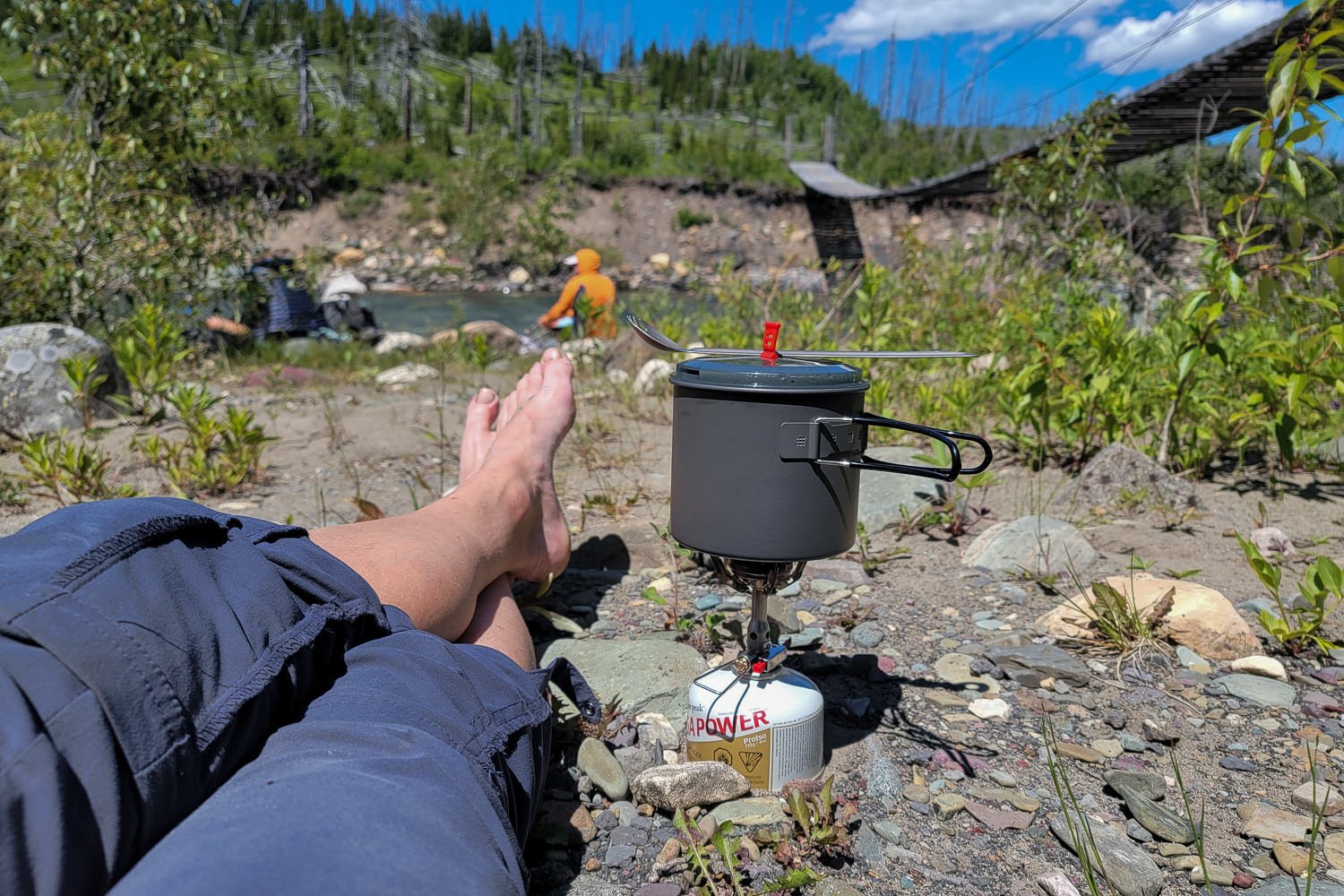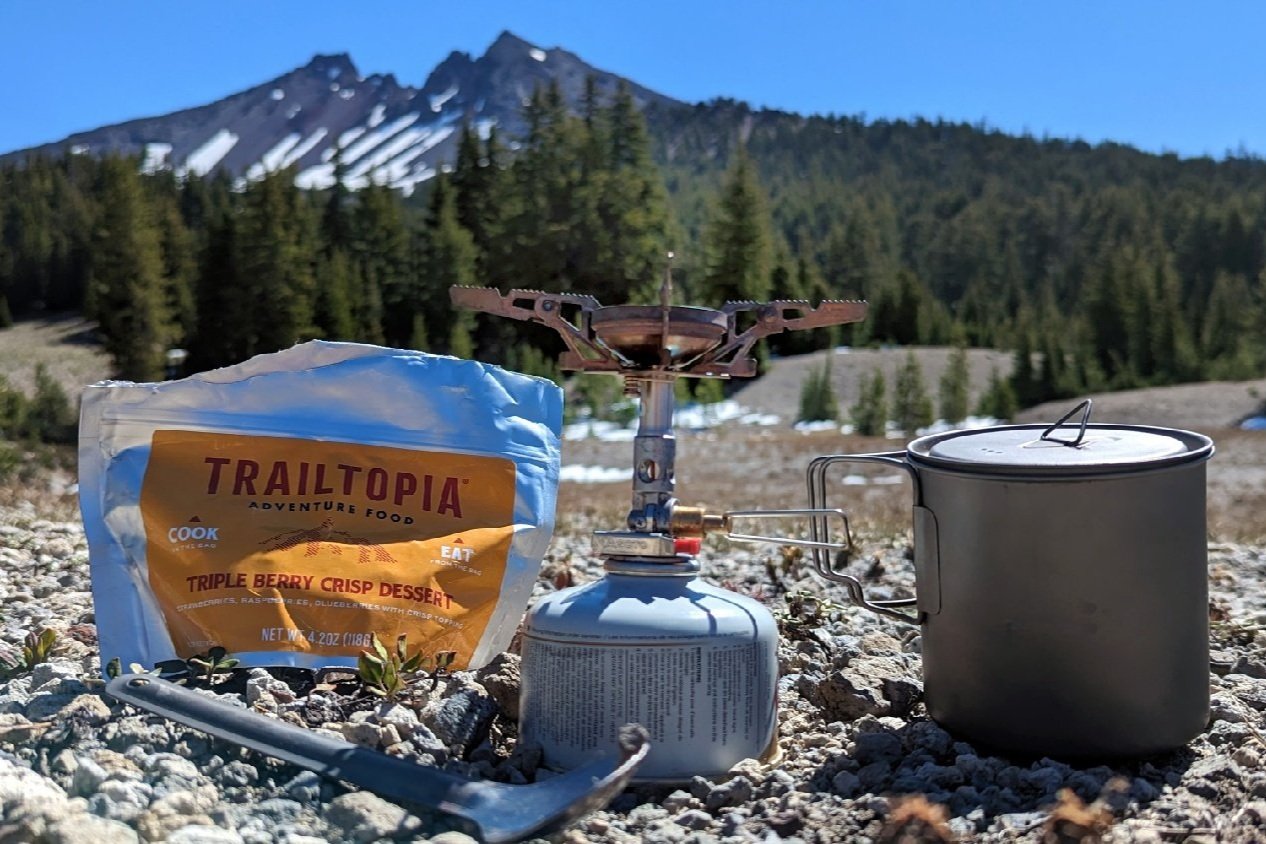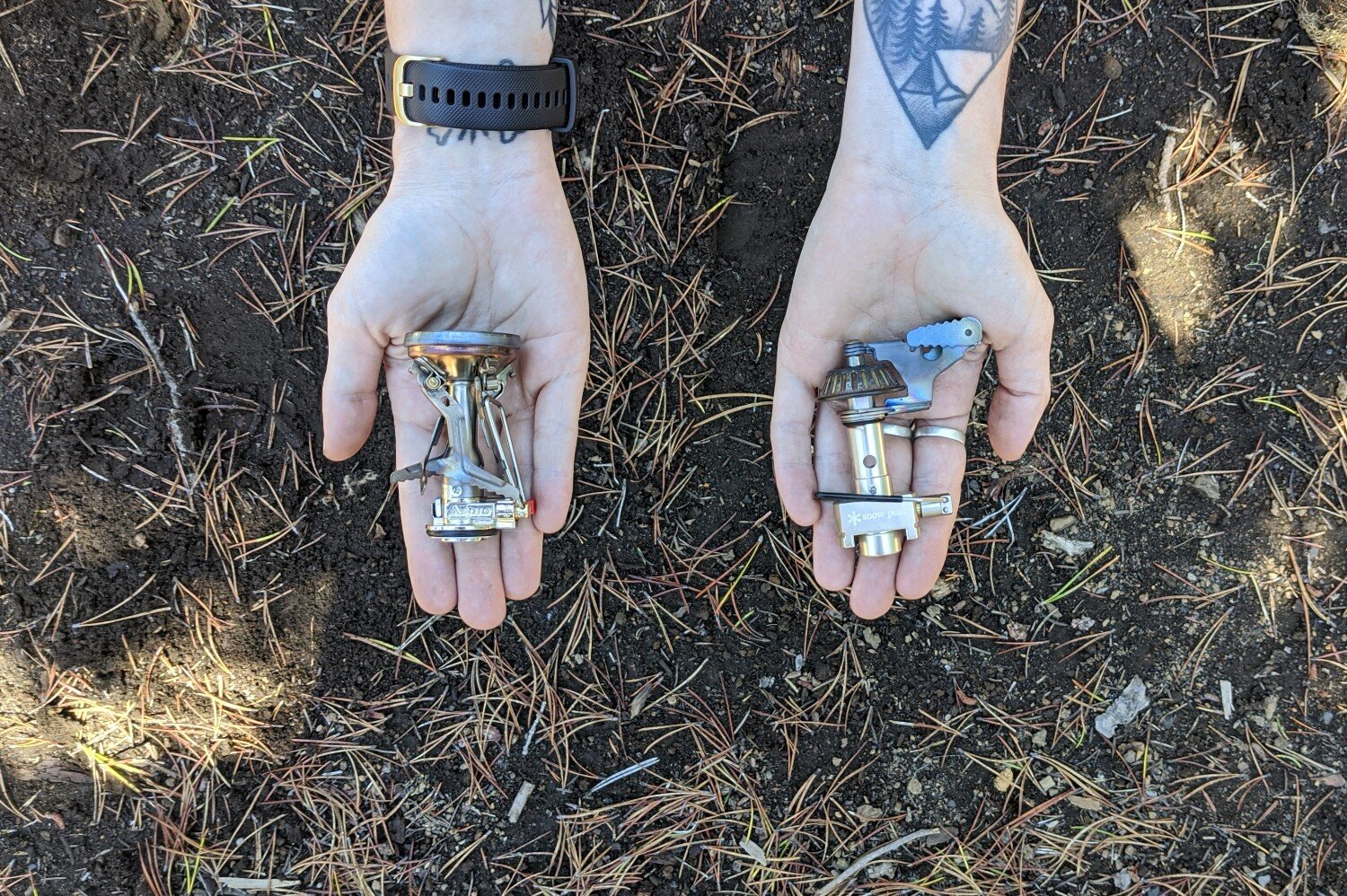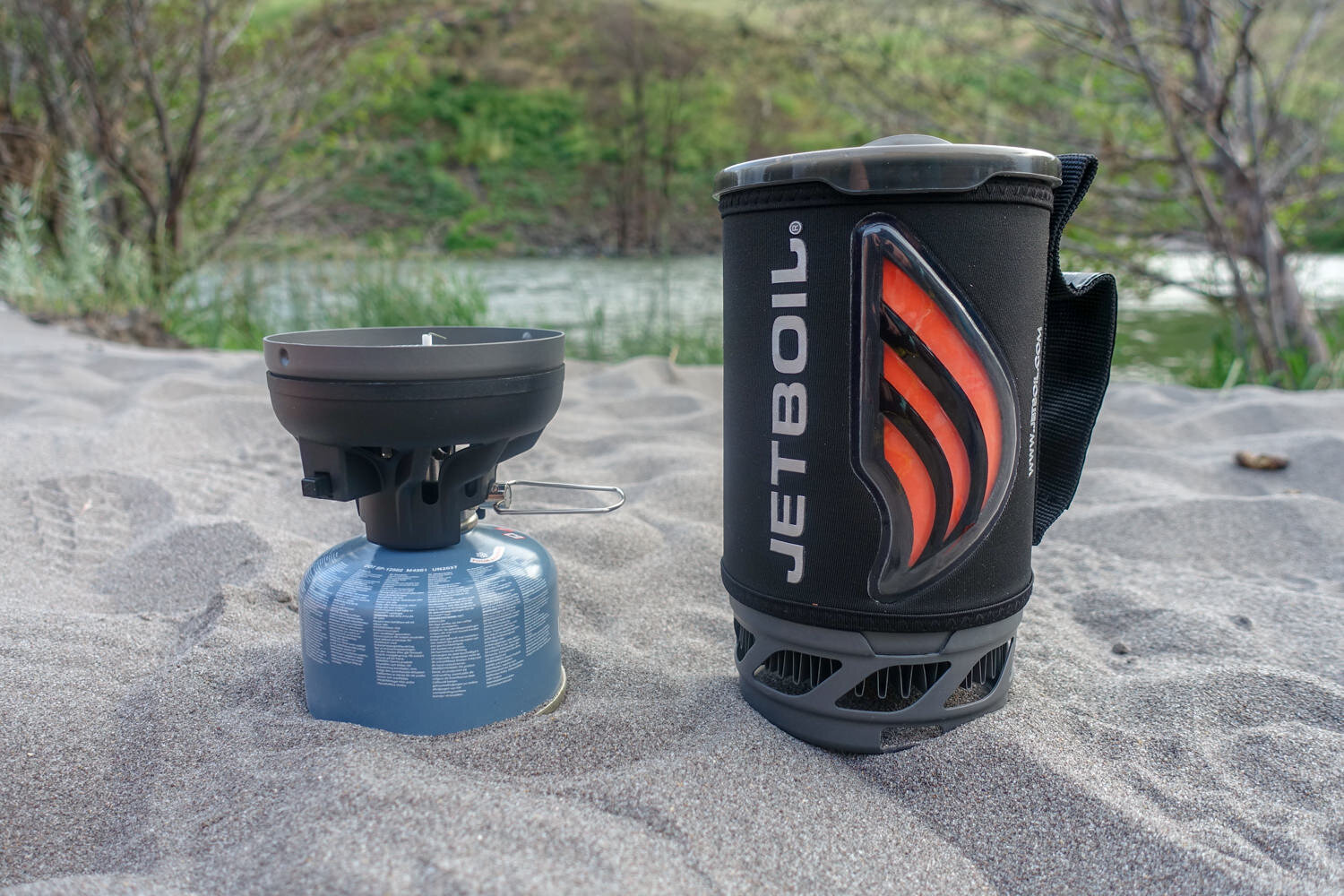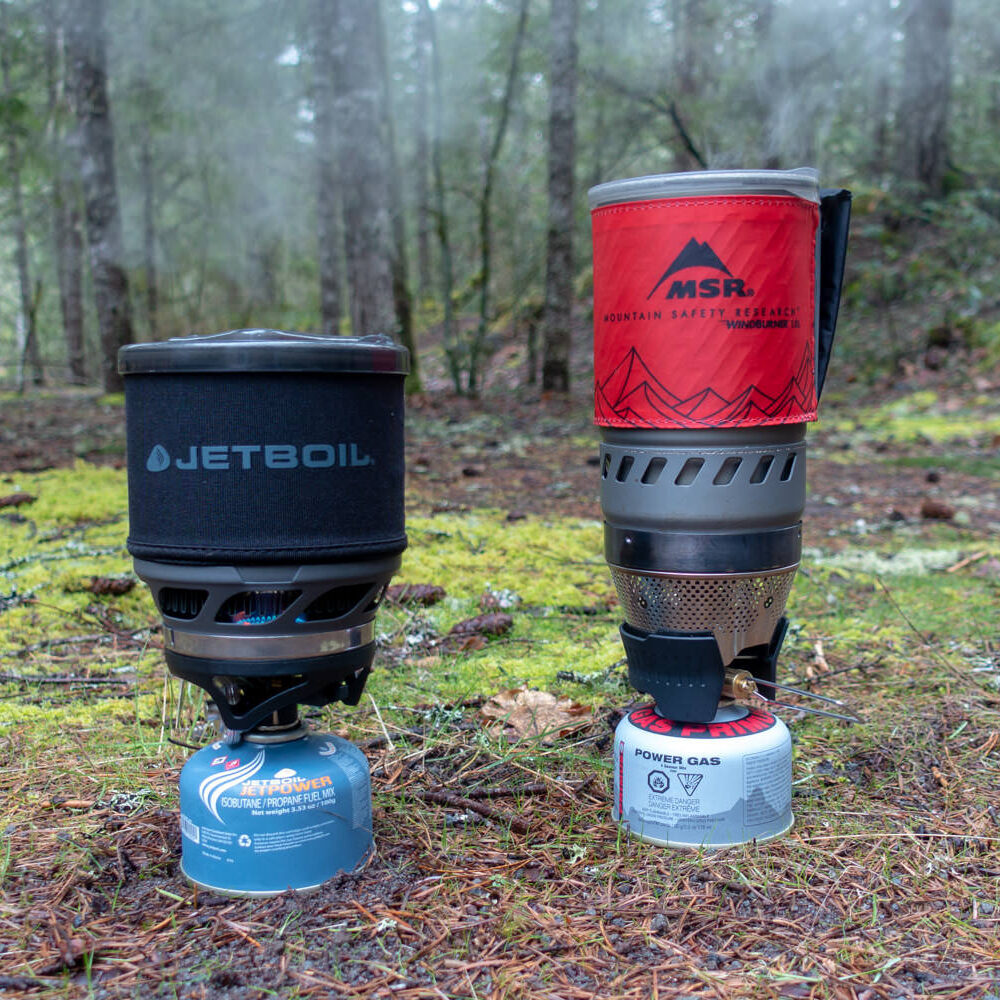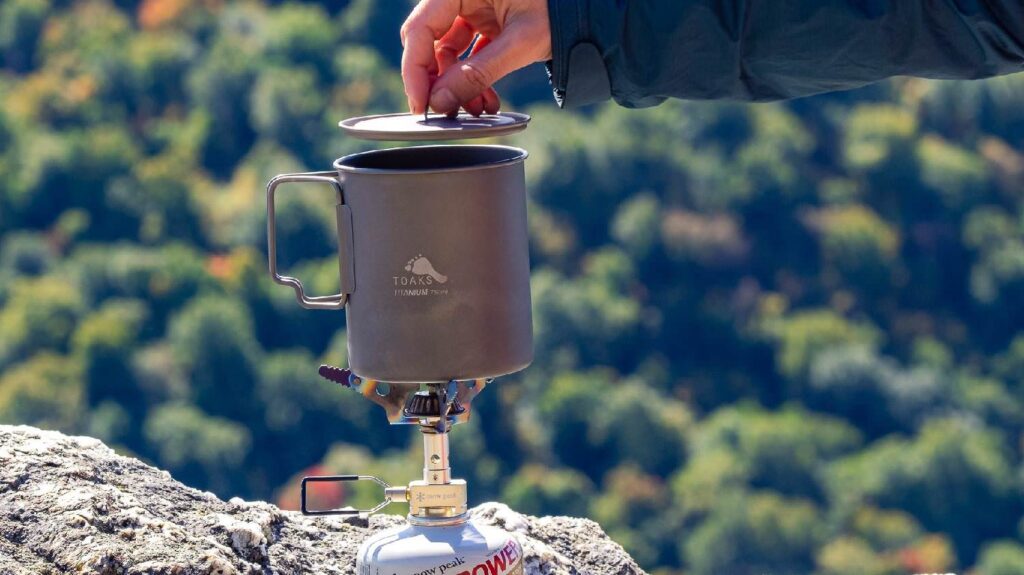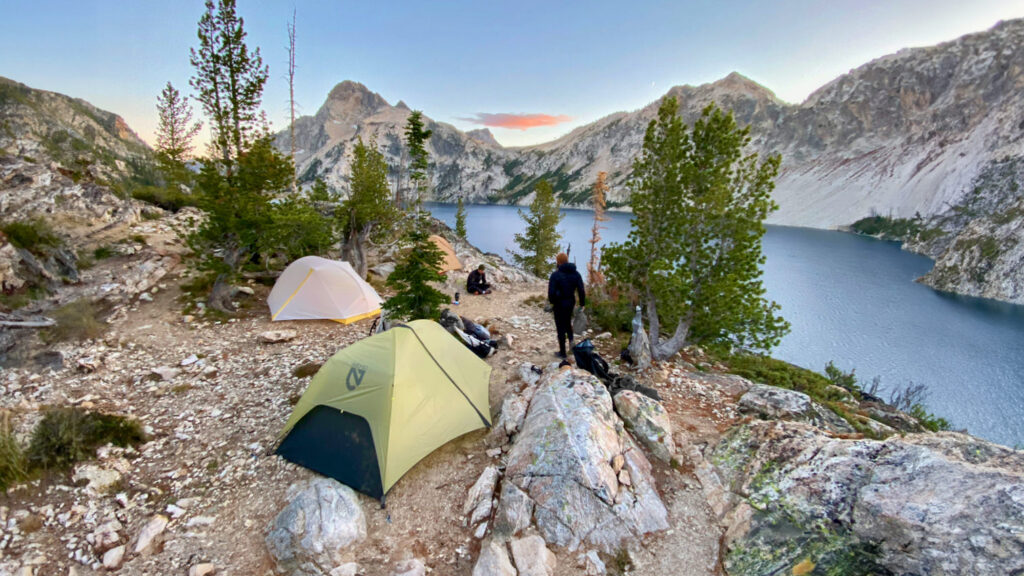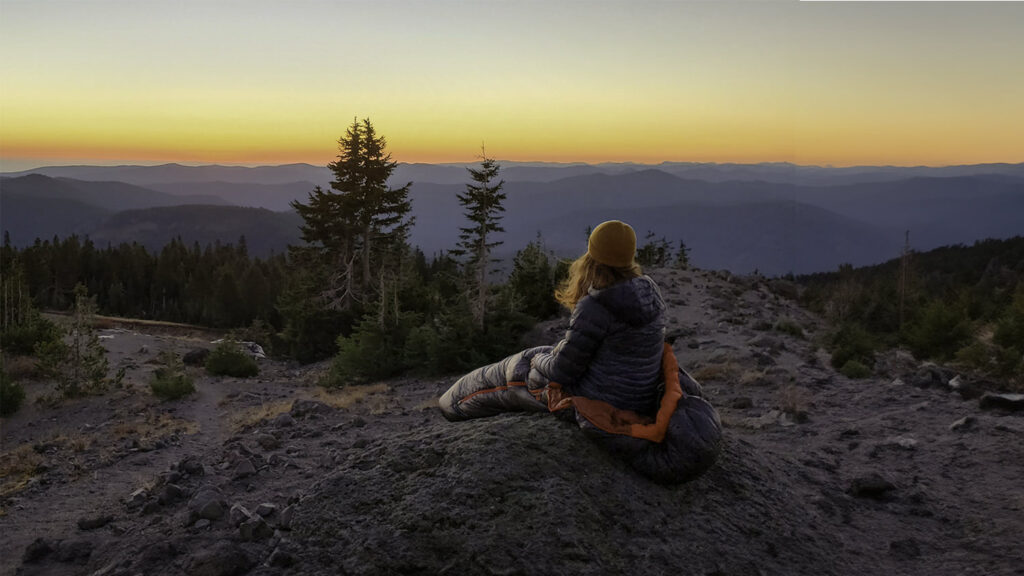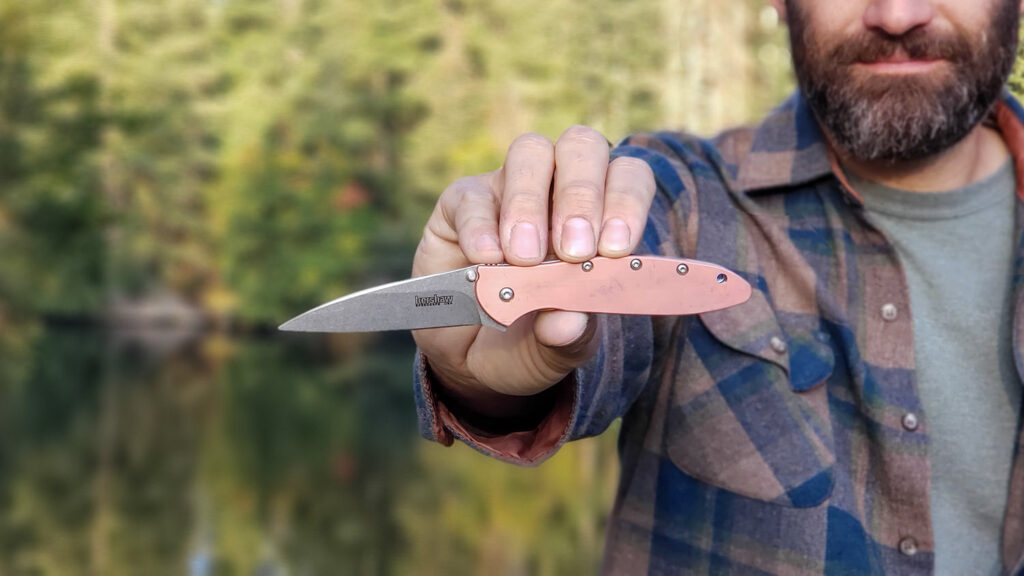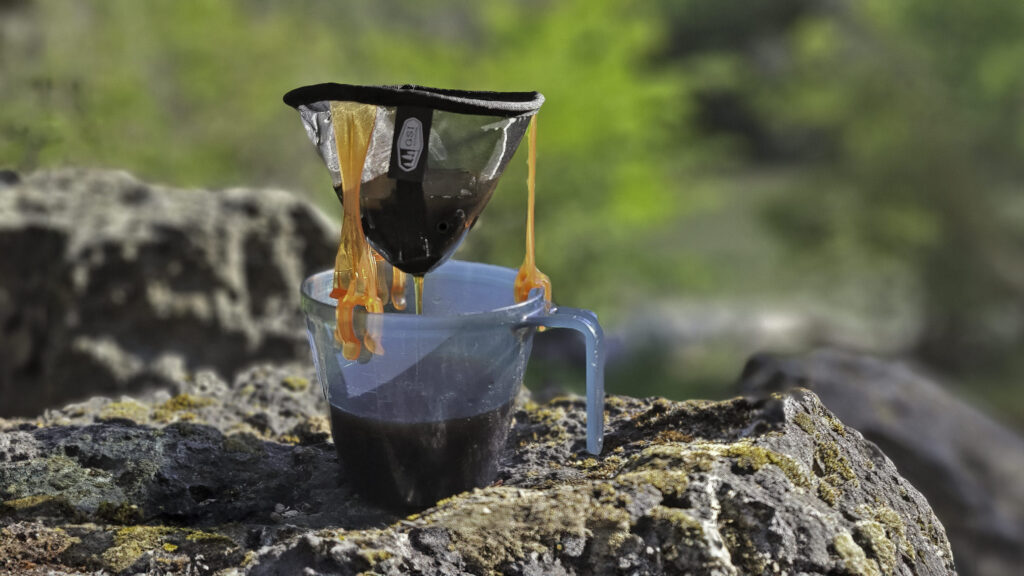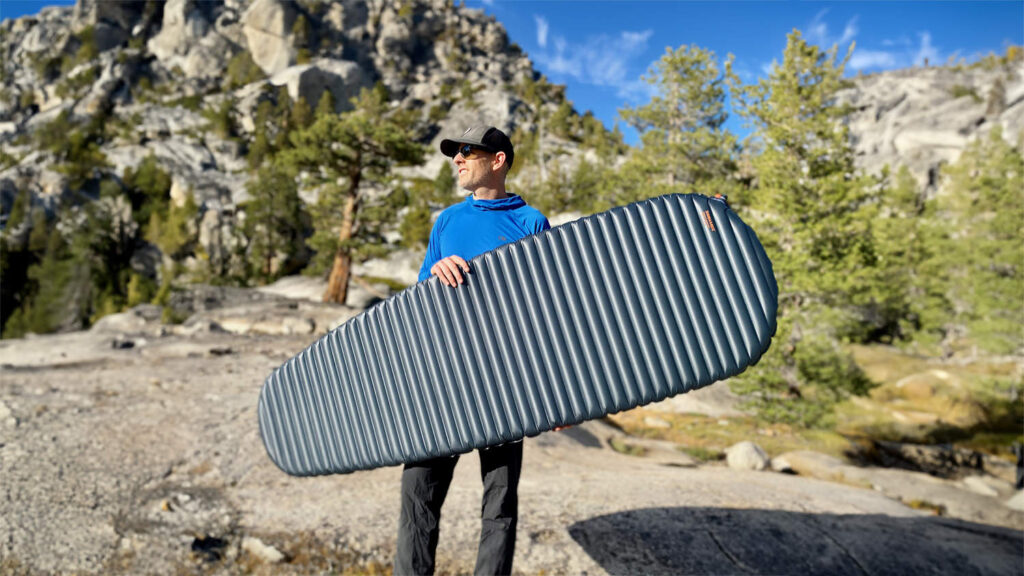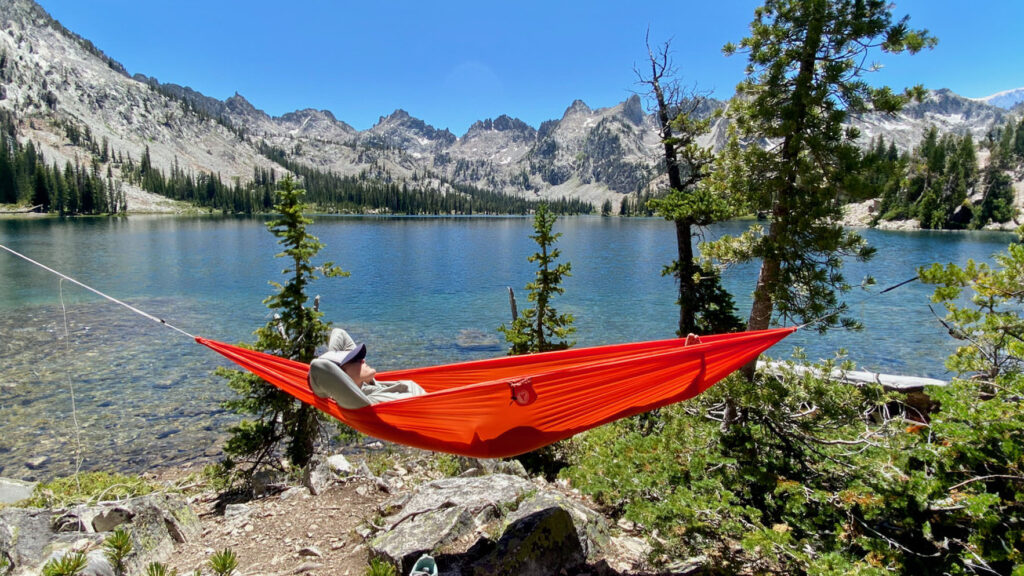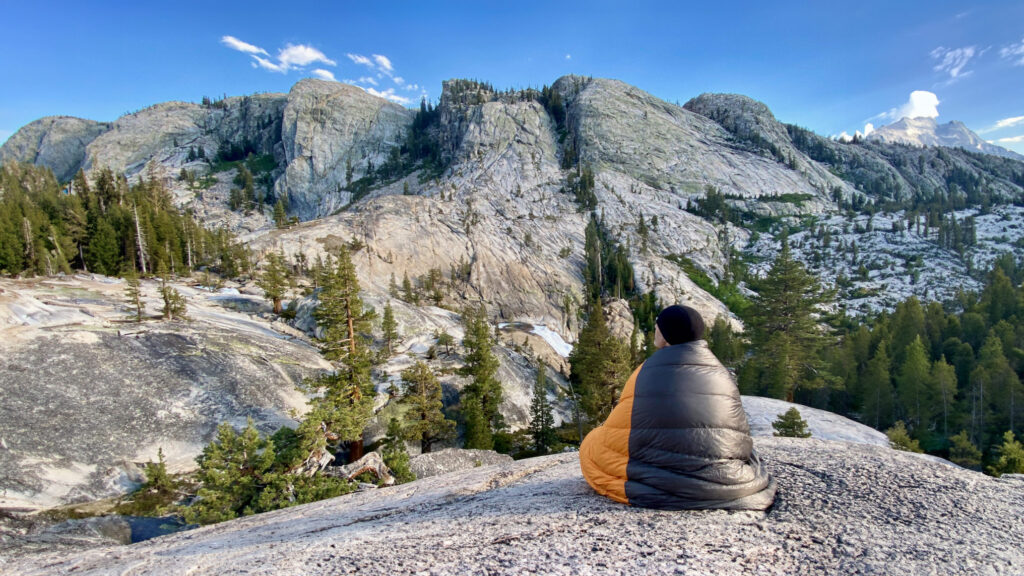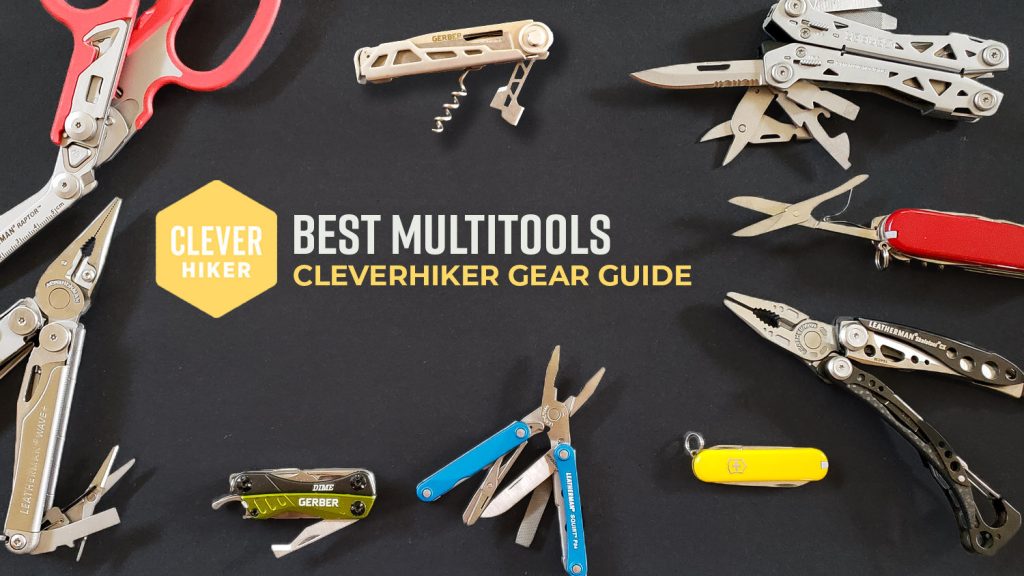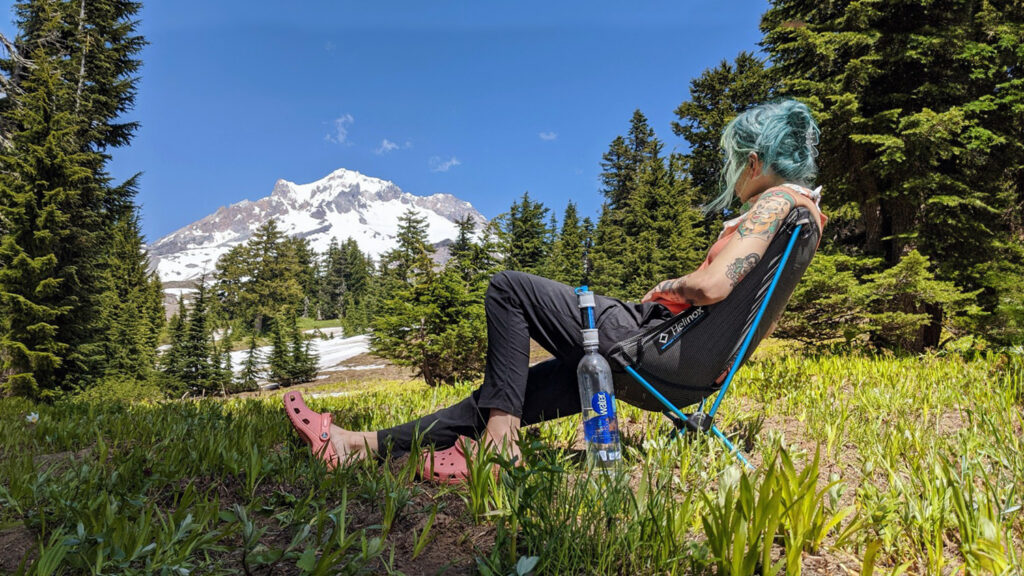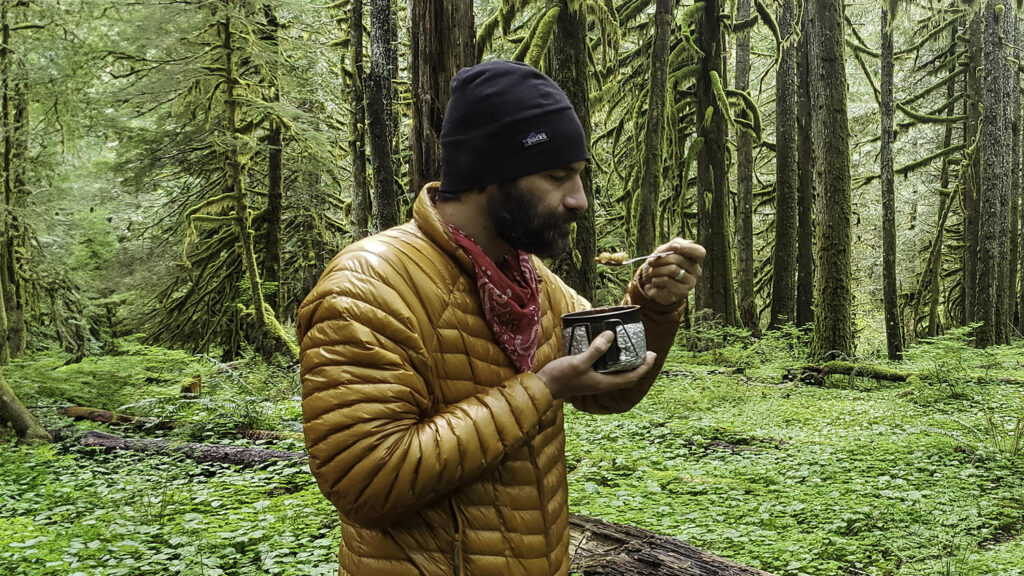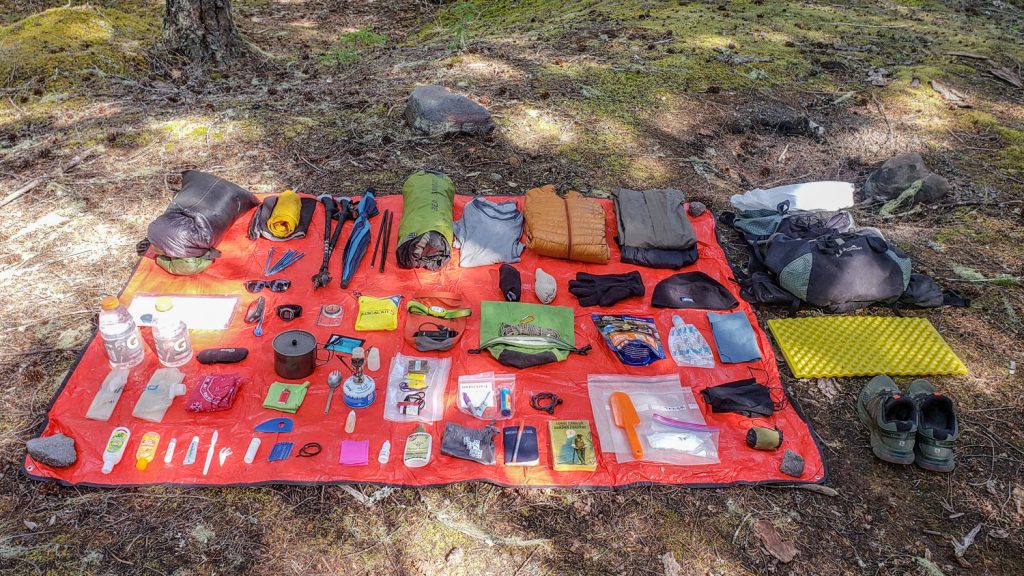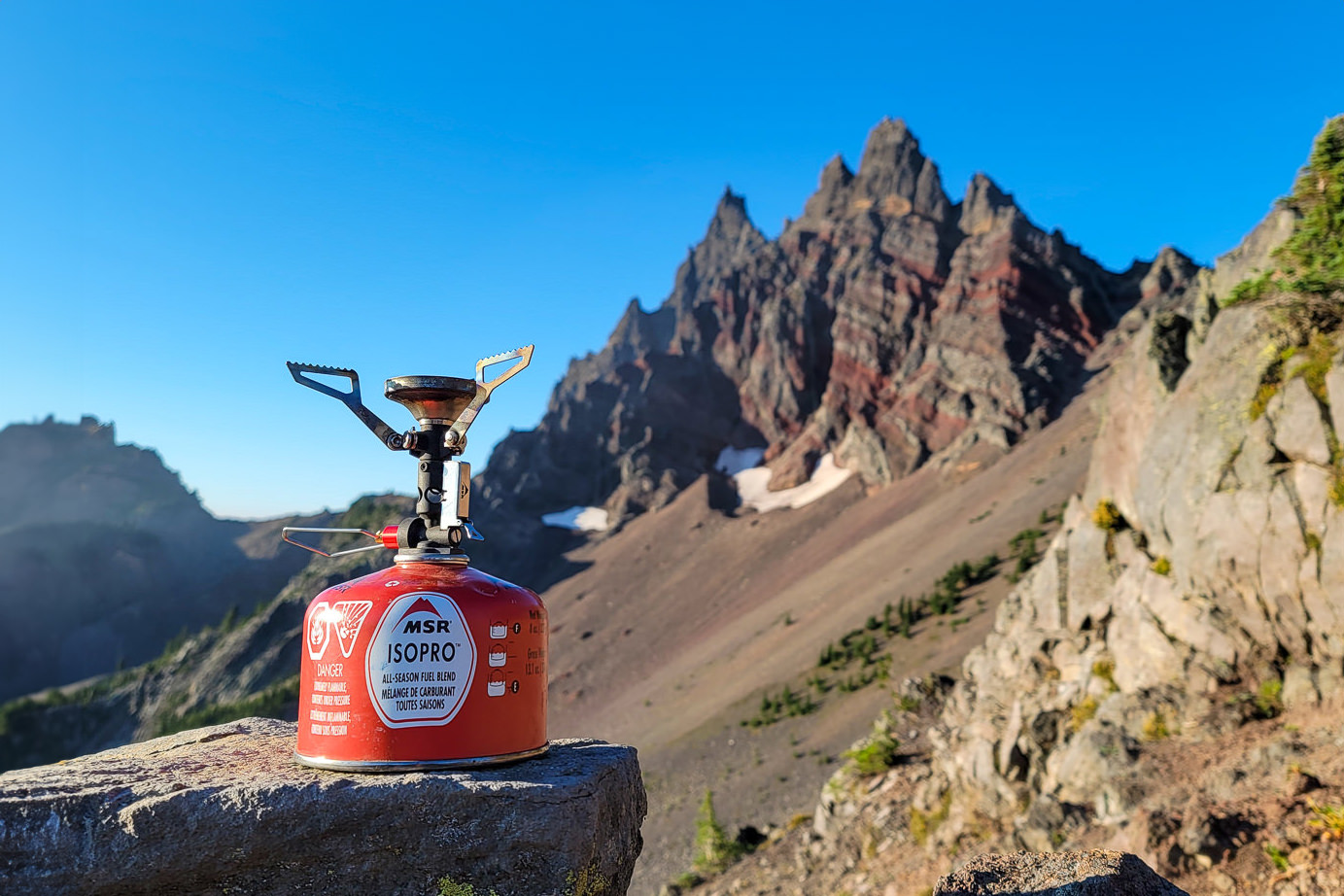
A backpacking stove can enhance your wilderness adventures in a way that few other tools can. Whether you’re a boil-water-and-let-it-sit kind of hiker or more of a backcountry gourmet, we’ve got the right stove recommendation for you.
We’ve researched and tested over 40 of the best backpacking stoves in the sky-high mountains of Nepal, the freezing ridges of Mt. Hood, and just about everywhere in between. We used our experience and expertise to narrow down this list of our absolute favorites.
Of course, you need something to cook with, so no trail mealtime is complete without top-notch cookware. If you’re a set-it-and-forget-it kind of chef, then our review of the best dehydrated backpacking meals is where you’ll want to turn next. And for those who prefer a more DIY approach, we’ve also put together some killer recipes for your next backcountry meal.
Quick Picks for Backpacking Stoves
Check out this quick list of the best backpacking stoves if you’re in a hurry, or continue scrolling to see our full list of favorites with in-depth reviews.
Best backpacking stove overall: MSR PocketRocket 2 ($50)
Best value integrated stove system: Jetboil Flash ($130)
Efficient stove with excellent wind performance: SOTO Windmaster ($70)
Best budget ultralight stove: BRS 3000T ($20)
Best budget stove & cookset bundle: SOTO Amicus Cookset Combo ($50)
Integrated stove system with wide cookpot & simmer control: Jetboil MiniMo ($170)
Ultralight canister stove with a tiny packed size: Snow Peak LiteMax ($60)
High-efficiency wood burning stove: Solo Stove Lite ($70)
What’s new
We’ve put several hundred more miles of use on our favorite backpacking stoves and updated our reviews with long-term testing notes:
- The SOTO Windmaster impresses us and scores high on our list, and we’ve added a full review.
- The MSR Whisperlite takes the title of best liquid fuel stove for winter treks.
- The MSR PocketRocket 2 remains our number one stove, and we’ve added some new details to our review.
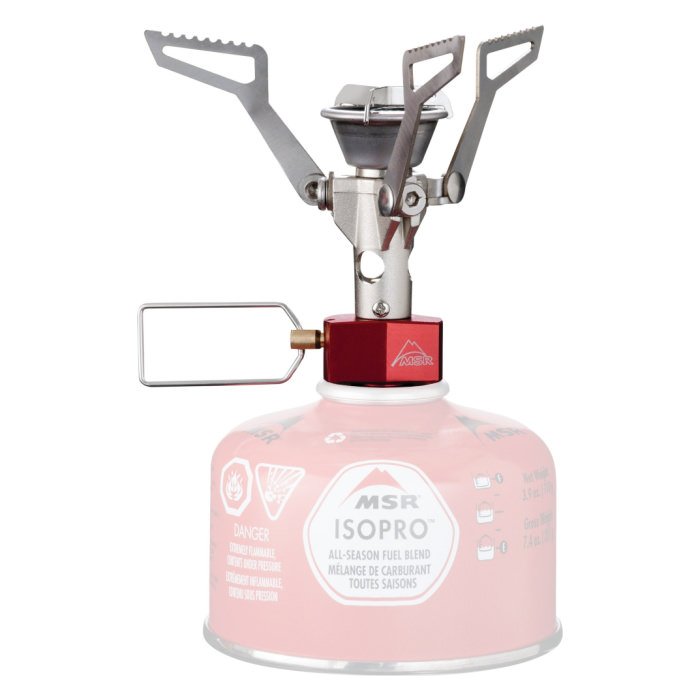
MSR PocketRocket 2
Best backpacking stove overall
Price: $50
Weight: 2.6 oz.
Fuel Type: Isobutane/Propane canister
Other Options: Pocket Rocket Delux, Pocket Rocket 2 Mini Stove Kit, Pocket Rocket 2 Stove Kit, Pocket Rocket Deluxe Stove Kit
Pros
- Ultralight
- Compact
- Durable
- Simmer control
- Efficient
Cons
- Somewhat bulky carrying case
- Not as good in wind as some
The MSR PocketRocket 2 is a lightweight, compact, and durable stove that won’t break your budget. During testing, the PocketRocket consistently outperformed more expensive stoves with its great simmer control and fast boil times.
One unique feature is the hard plastic storage case that comes with the PocketRocket. This keeps the stove protected from debris and ensures it won’t get bent or damaged in your backpack. We sometimes opt to leave the case behind when we want to go as light as possible, but it only weighs 1.6 oz. – not a big penalty for the added peace of mind.
MSR also offers the PocketRocket 2 Kit, which comes with the stove, a pot, a bowl, a straining lid, and a pot grip. The kit is an awesome value if you’re looking for a complete cooking setup.
Another upgrade you can opt for is the MSR PocketRocket Deluxe (which is also available as a Stove Kit). The Deluxe comes with a push button igniter, a pressure regulator to help performance in cold temps and at high altitude, and a recessed burner head for improved wind performance.
The standard PocketRocket 2 is a great choice for seasoned thru-hikers and backpacking novices alike. Though the Deluxe has a more robust regulator for high altitude and cold weather, we’ve never had an issue with the PocketRocket 2. Check out our full review of the PocketRocket 2 here.
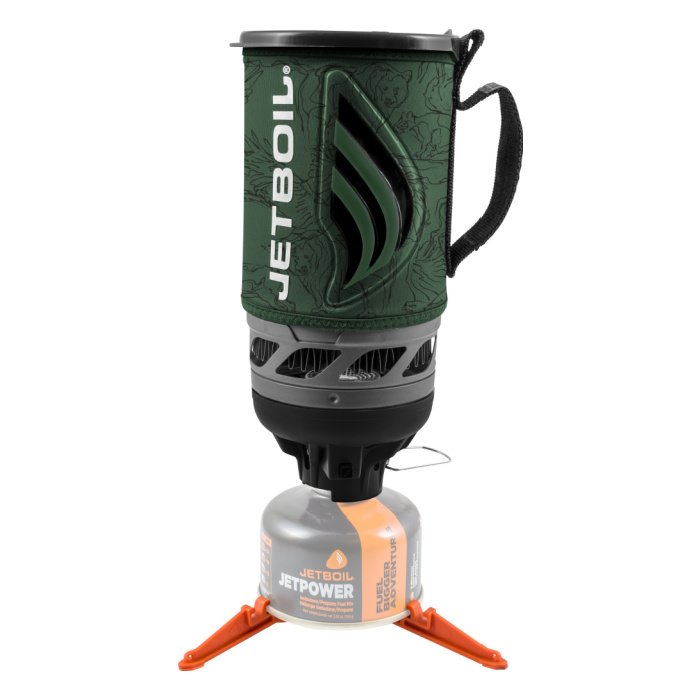
Jetboil Flash
Best value integrated stove system
Price: $130
Weight: 13.1 oz.
Fuel Type: Isobutane/propane canister
Pros
- Convenient
- Fast boil time
- Pot included
- Push-button igniter
- Performs well in wind
Cons
- Expensive (but comes with pot)
- No simmer control
- Heavy & bulky for backpacking
While integrated stoves aren’t the lightest backpacking option, they’re by far the fastest and most convenient stoves. Among this stove type, the Jetboil Flash is one of the most affordable and dependable options. The Flash is best used just for boiling water quickly since it doesn’t have simmer control, but that’s all a backpacker needs for dehydrated meals and morning coffee.
Integrated stove systems are perfect for beginners because of their simplicity. There’s no need to figure out and purchase separate cookware, and the burner ignites with the push of a button.
Hikers who prefer a stove with simmer control can still enjoy the convenience of an integrated stove system with the Jetboil MiniMo listed below. It costs more than the Flash, but it gives you the ability to get more creative with your meals since you can control the flame.
Full review: Jetboil Flash
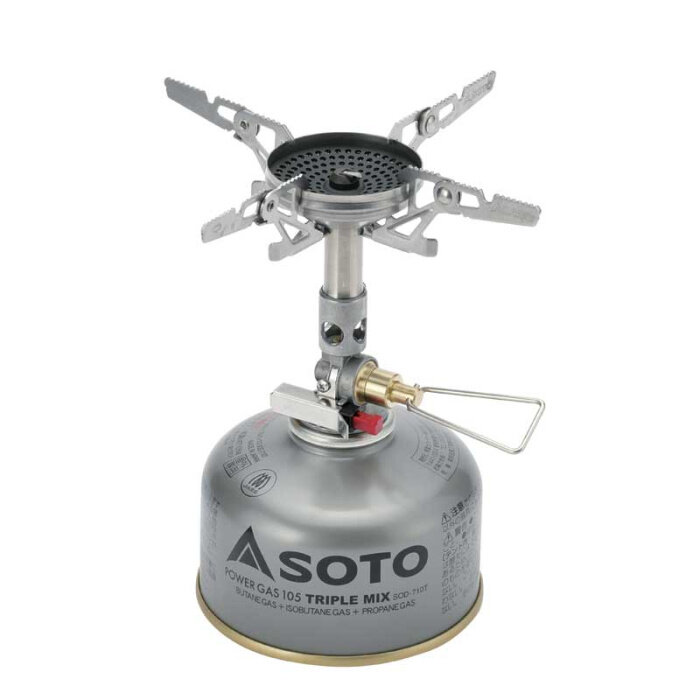
SOTO Windmaster
Efficient stove with excellent wind performance
Price: $70
Weight: 3.1 oz.
Fuel Type: Isobutane/propane canister
Pros
- Performs well in wind
- Lightweight
- Efficient
- Push-button igniter
- Stable pot support
- Simmer control
Cons
- Slightly bulkier than some
- Expensive
The SOTO Windmaster is a highly efficient stove that, as the name would imply, performs beautifully in windy conditions. This powerful little stove boils very quickly, and was noticeably quieter than many other stoves we’ve used.
The Windmaster outperforms other stoves in windy conditions because the recessed burner has a lip around it, and there’s very little open space between the burner head and the pot. This means there’s not a lot of room for wind to interfere with your flame, and the result is a faster and more efficient boil in unideal conditions.
We also love that the Windmaster can be adapted to suit different pots. You have the option to attach the included 4-prong support for larger cooksets, or you can purchase an ultralight 3-prong attachment for small pots. While the Windmaster is slightly bulkier than some of our other favorite canister stoves, it’s still quite manageable and packs a lot of power for such a neat little package.
Check out our full review of the SOTO Windmaster here.
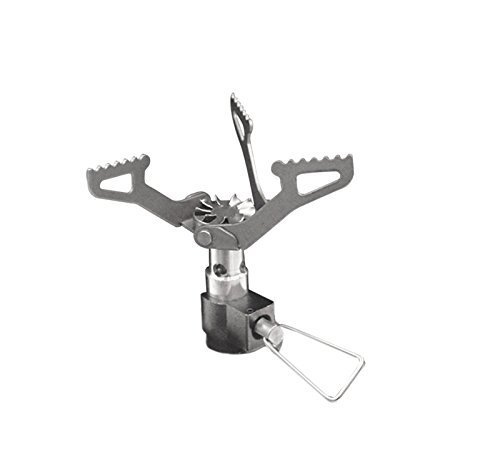
BRS 3000T
Best budget ultralight stove
Price: Around $20
Weight: 1 oz.
Fuel Type: Isobutane/propane canister
Pros
- Affordable
- Ultralight
- Compact
Cons
- Not as durable as some
- No simmer control
- Knob to turn gas on/off is a little finicky
- Not as good in wind as some
If you’re looking for a super cheap and ultralight stove that’ll work for 1-2 people, the BRS 3000T is about as cheap as they come. While the BRS stove isn’t nearly as dependable as many of the other stoves on this list, it’s worked well for us.
The BRS doesn’t feel very sturdy so you have to treat it with care, but for its price and weight, it’s a solid option for thru-hikers and ultralight backpackers. Don’t expect any frills with this stove (no simmer control, push-button igniter, fuel regulator, etc), but it’s great if you just need something cheap and light to get the job done.
We pair the BRS stove with the Snow Peak Mini Solo Cookset for a truly ultralight cooking system.
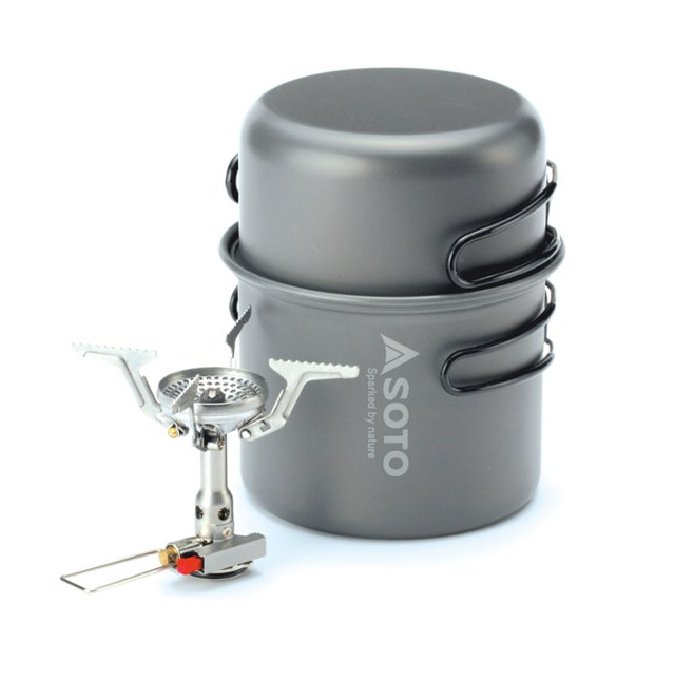
SOTO Amicus Cookset Combo
Best budget stove & cookset bundle
Price: $50
Weight: 11.2 oz. (stove + pot) / 2.7 oz. (stove only)
Fuel Type: Isobutane/propane canister
Pros
- Ultralight
- Affordable
- Two pots included
- Simmer control
- Stable pot support
- Performs well in wind
Cons
- Pots don’t have measurement marks
The SOTO Amicus Stove Cookset Combo is a super affordable bundle that includes both an ultralight stove and a pot. The Amicus stove has excellent simmer control, four locking legs that provide solid pot support, and a recessed burner for increased performance in the wind.
The cookware that comes with this set is somewhat basic, but it’s lightweight and gets the job done efficiently. We like that the pot has a generous capacity so we can heat enough water for everything at once, and the deep lid can be used as a separate cup.
We recommend the Amicus Combo to anyone on a budget who needs a complete, lightweight cook system for backpacking.
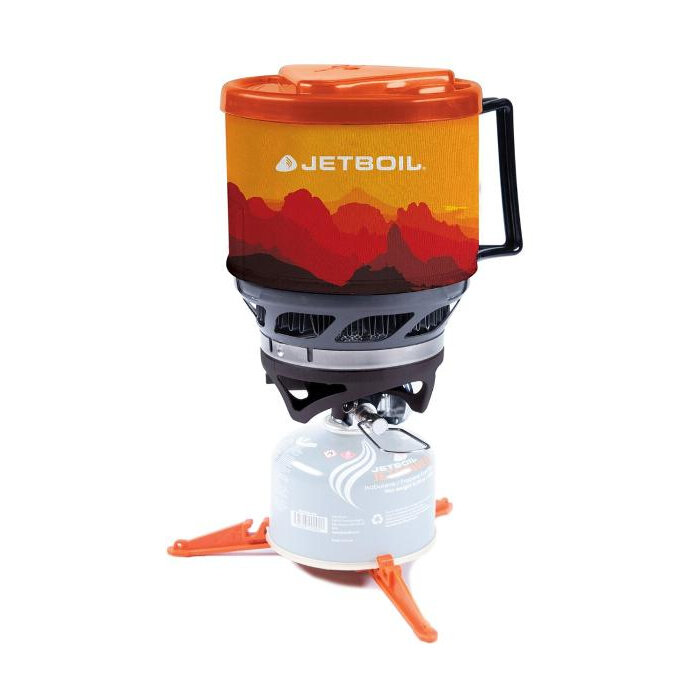
Jetboil MiniMo
Integrated stove system with wide cookpot & simmer control
Price: $170
Weight: 14 oz. (stove + pot)
Fuel Type: Isobutane/propane canister
Pros
- Convenient
- Fast boil time
- Simmer control
- Pot included
- Push-button igniter
- Performs well in wind
Cons
- Expensive (but comes with pot)
- Heavy & bulky for backpacking
The Jetboil MiniMo is a complete cooking system that’s just about as convenient and efficient as backcountry stoves get. The MiniMo is loaded with useful features including a sturdy handle, push-button igniter, excellent simmer control, and a stout shape that makes eating out of it easier. The MiniMo is slightly heavier and more expensive than some ultralight stove/pot combinations, but its speed, convenience, and stability make it exceptional for the backcountry. The Jetboil MicroMo is the same stove with a slimmer and slightly smaller pot to reduce weight. The Jetboil Flash is less expensive and also excellent, but it doesn’t have simmer control. Check out our full review of the MiniMo here.
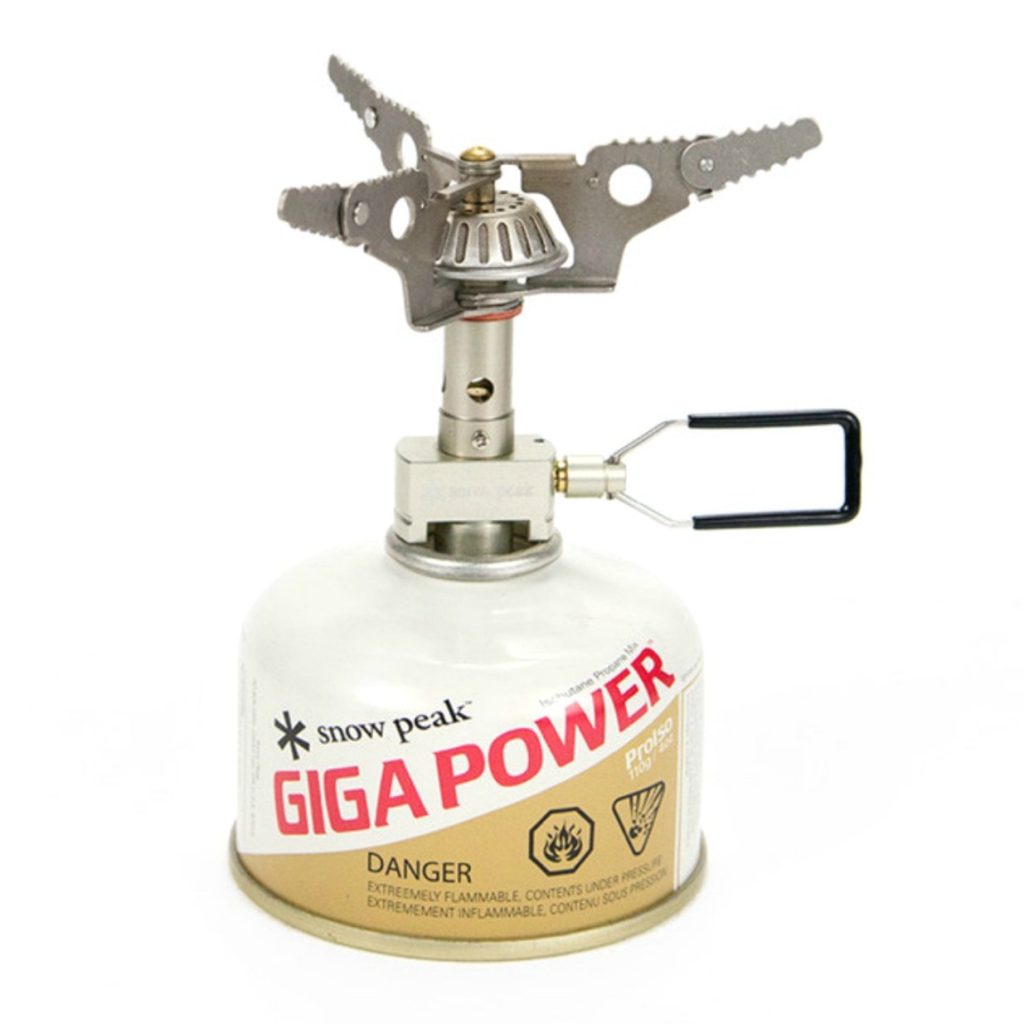
Snow Peak LiteMax
Ultralight canister stove with a tiny packed size
Price: $60
Weight: 1.9 oz.
Fuel Type: Isobutane/propane canister
Pros
- Ultralight
- Compact
- Durable
- Simmer control
Cons
- Not as good in wind as some
The Snow Peak LiteMax is an ultralight, durable, and compact canister stove that packs down very small. The LiteMax is built with titanium to keep weight to an absolute minimum. It’s main strength is its highly collapsible folding design, which makes it easy to pack away in any cookpot. It also has good simmer control, fast boiling times, and does a decent job in the wind too (though integrated canister stoves will always do better in windy conditions). Check out our full review here.
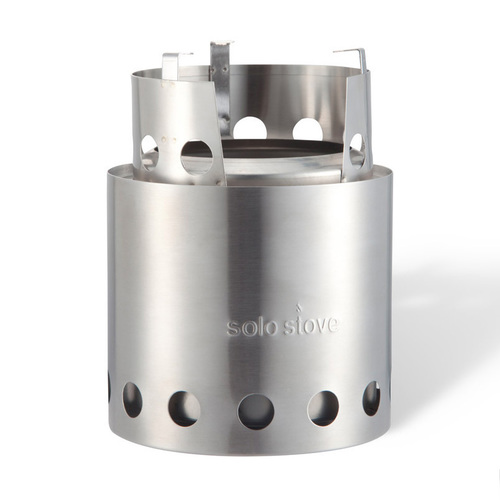
Solo Stove Lite
High-efficiency wood burning stove
Price: $70
Weight: 9 oz.
Fuel Type: Wood
Pros
- Don’t need to carry fuel
- Efficient
- Low smoke design
- Stable pot support
Cons
- Expensive
- Heavy
- Slightly bulky
- Can’t control flame
The Solo Stove Lite is a double-wall natural convection inverted downgas gasifier stove. And what do all those fancy words mean? Who knows!?! What we can tell you is the Solo Stove is incredibly efficient and effective. Air intake holes in the bottom of the stove feed the fire from below and above. The end result is a hot and less smoky burn that doesn’t require a windscreen and won’t scorch the ground under your stove. At 9 oz., this stove isn’t winning any weight prizes, but not having to carry fuel does help. Combine the Solo Stove with the Pot 900 for a completely nested cooking system and more space in your pack. The Solo Lite is a good size for 1-2 people. For 2-4 people, bump up to the Solo Titan.
Check out our full review and comparison of Solo Stove products here.
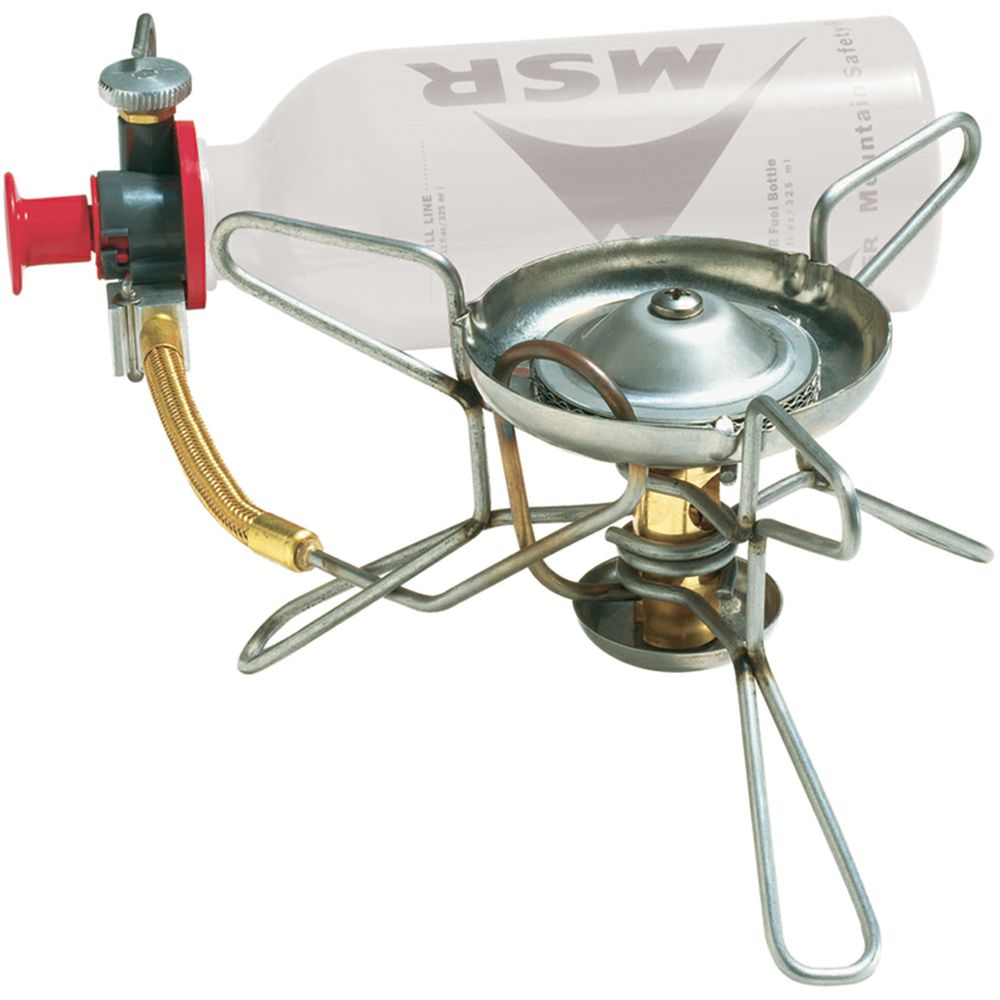
MSR WhisperLite
Best liquid fuel stove for winter treks
Price: $135
Weight: 11.5 oz.
Fuel Type: White gas
Pros
- Performs well in extreme cold & high altitude
- Efficient
- Quieter than other liquid fuel stoves
- Stable pot support
Cons
- Slight learning curve
- No simmer control
- Heavy/bulky
- Expensive
The MSR WhisperLite is one of the most popular liquid fuel stoves because it’s among the lightest, smallest, and least expensive on the market. It’s also much quieter than many other roaring liquid fuel stoves. It’s simple to use and it will last for a long time with regular maintenance. Pick up the WhisperLite service kit to keep your stove functioning efficiently. If you want the ability to use fuel types other than white gas, check out the WhisperLite International (white gas, kerosene, unleaded gas) or WhisperLite Universal (white gas, kerosene, unleaded gas, or isobutane-propane).
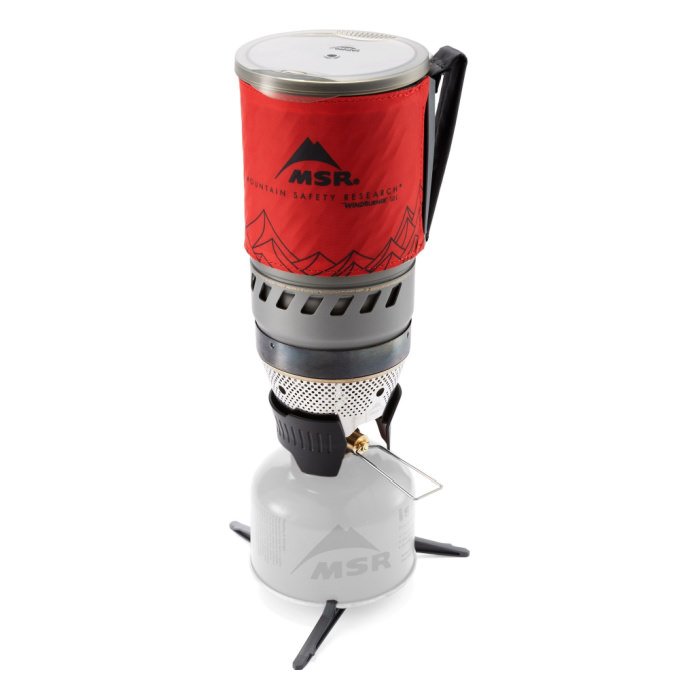
MSR WindBurner
Highly wind-resistant integrated stove system
Price: $190
Weight: 15.5 oz. (stove + pot)
Listed Boil Time: 4 min, 30 sec.
Fuel Type: Isobutane-propane canisters
Pros
- Performs well in wind
- Convenient
- Fast boil time
- Pot included
Cons
- Expensive (but comes with pot)
- Simmer control isn’t great
- Heavy & bulky for backpacking
The MSR WindBurner is another extremely convenient integrated stove system. The main advantage it has over the MiniMo is its excellent wind resistance. Stiff winds can greatly reduce stove efficiency, but that’s not an issue with the WindBurner.
We prefer the stout body shape and the superior simmer control of the MiniMo, but if you often backpack in exposed and windy locations, this stove might be a better fit for your adventures.Pick up the WindBurner Coffee Press Kit to elevate your backcountry brewing game. For more information on the WindBurner, check out our full review here.
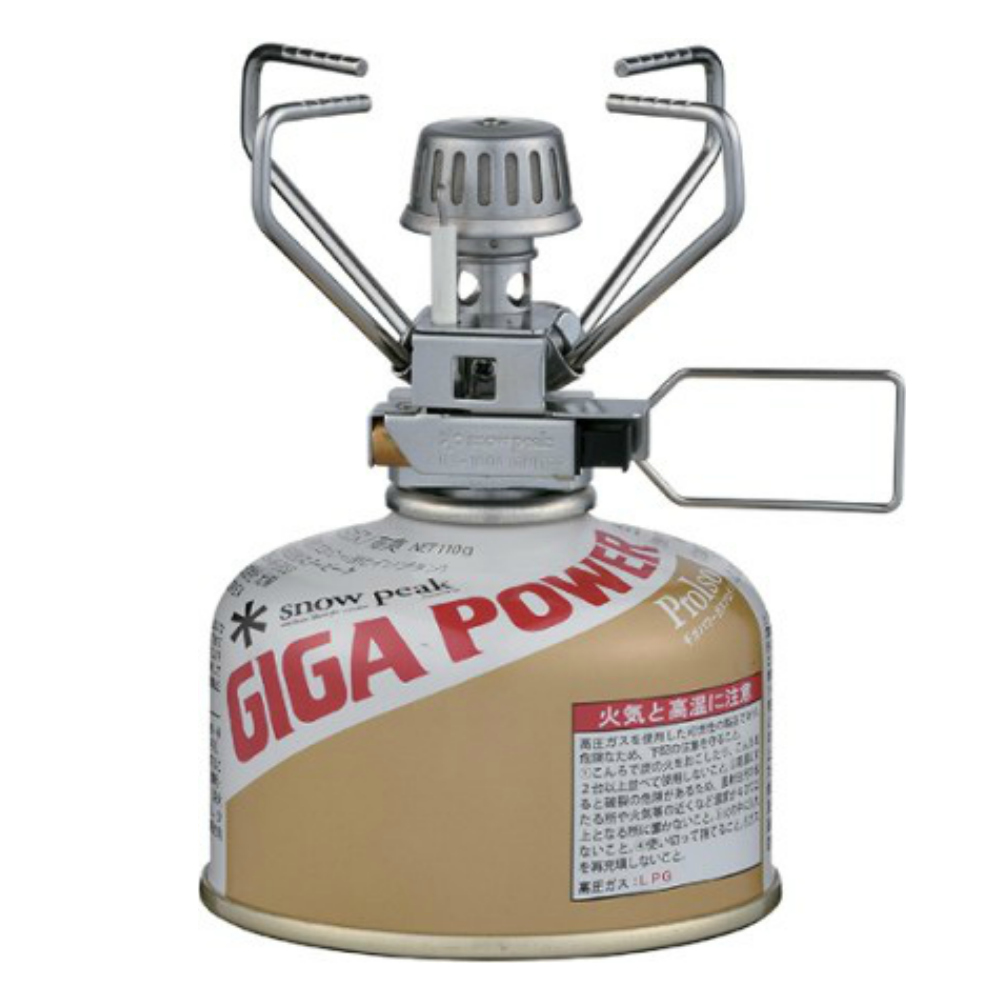
Snow Peak GigaPower 2.0
Durable canister stove with a lot of convenient features
Price: $50
Weight: 3.2 oz.
Fuel Type: Isobutane/propane canister
Pros
- Lightweight
- Efficient
- Simmer control
- Durable
- Stable pot support
Cons
- Slightly bulkier than some
- Not as good in wind as some
The Snow Peak GigaPower 2.0 is a compact canister stove that’s big on convenience. It has a push-button igniter, great simmer control, and fast boil times.
The GigaPower also has four flat pot supports, which makes it slightly more stable than most three-prong stoves. Snow Peak makes a GigaPower Manual version as well, which is slightly lighter and less expensive, but doesn’t have a push-button igniter.
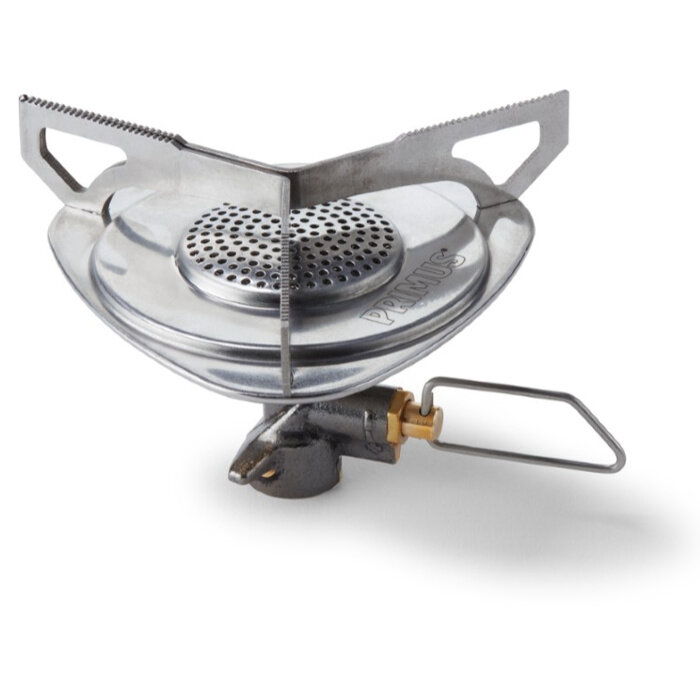
Primus Essential Trail Stove
Affordable stove with a wide burner & great simmer control
Price: $30
Weight: 3.8 oz.
Fuel Type: Isobutane/propane canister
Pros
- Affordable
- Simmer control
- Stable pot support
- Durable
- Simple design
Cons
- Heavier/bulkier than some
- Doesn’t come with a stuff sack/carry case
For beginners and those on a tight budget, the Primus Essential Trail Stove is one of the simplest and most affordable stoves on our list. The simmer control has a nice range for precision cooking, and the wide burner provides stability and even heat dispersion. We typically prefer stoves that fold down smaller – this one can be difficult to store inside small cookpots with a fuel canister. That’s a minor gripe though, and the no-frills design of the Essential Stove makes it a great choice for stove users on a budget.
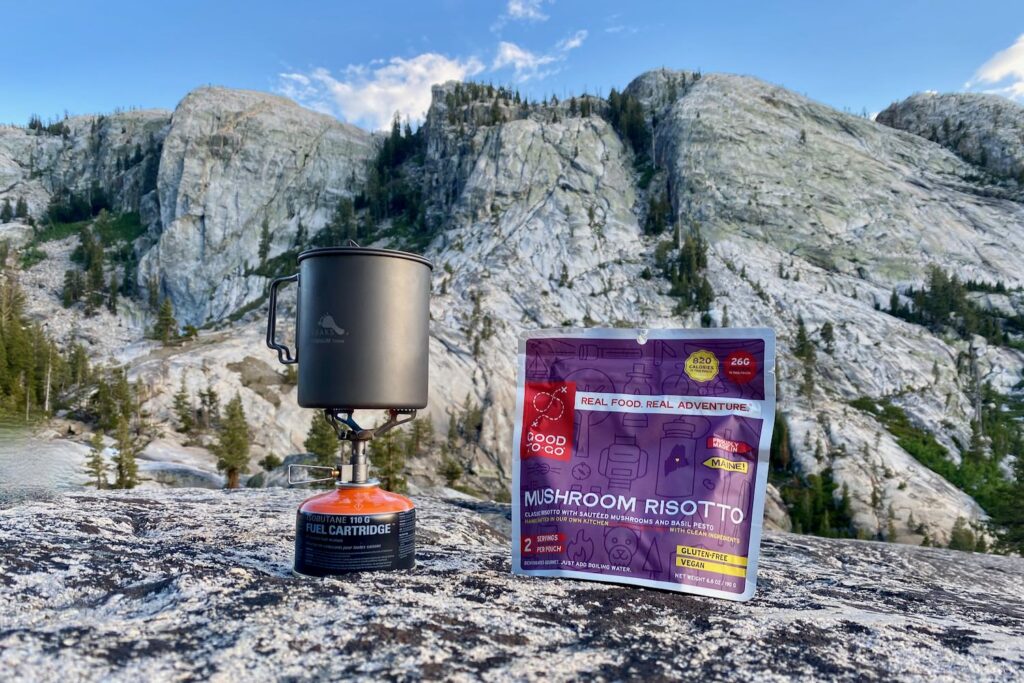
What’s Most Important to You in a Stove?
PRICE
Typically the more you spend, the more features you get with backpacking stoves. More expensive stoves are likely to have better simmer control, superior wind performance, and many even come with an integrated cookpot. Hikers just looking to boil water for rehydrating meals may find that saving money with a less-feature rich option is better for their needs.
We recommend stoves at a variety of price points below, but it usually makes sense to spend a little more for a stove you can use for many years if you’re going to backpack a lot.
Best mid-range backpacking stoves
- MSR PocketRocket 2
- Snow Peak LiteMax
- SOTO Windmaster
- Snow Peak GigaPower 2.0
- MSR PocketRocket Deluxe
Best budget backpacking stoves
Best high-end stoves
STOVE TYPE
Canister stoves are the most common and convenient, and they’re the easiest to use. Liquid fuel stoves are the most efficient for trips at high altitude or below freezing temperatures. Wood stoves are nice because you don’t have to lug fuel around, but they don’t work for trips above treeline or in most desert environments. Solid fuel stoves and alcohol stoves are generally pretty budget-friendly and ultralight, but you can’t control the flame, they yield slow boil times, and they’re not great in wind.
Best canister stoves
- MSR PocketRocket 2
- Jetboil Flash
- SOTO Windmaster
- BRS 3000T
- SOTO Amicus Cookset Combo
- Jetboil MiniMo
- Snow Peak LiteMax
Best liquid fuel backpacking stove
Best wood-burning stove
Best solid fuel backpacking stove
Best alcohol stove
WEIGHT
Big liquid fuel power-burners used for snow melting can weigh close to a pound and ultralight gram-saver stoves can weigh under as little as one ounce. We tend to prefer ultralight canister stoves for most of our 3-season backpacking trips, but we do bring heavier integrated stove systems for shorter trips and liquid fuel stoves for winter trips.
Best ultralight backpacking stoves
Best lightweight stove system
Best heavy-duty backpacking stoves
What Type Of Backpacking Stove Is Right For You?
CANISTER STOVES
Canister stoves are the clear frontrunner for 3-season backpacking because they’re light, compact, easy to use, and fast. With canister stoves there’s no priming, pumping, or maintenance of any kind. Simply screw in your stove and light it up for a quick meal.
In addition, isobutane canisters are more efficient than Esbit and alcohol, and they’re very easy to find in outdoor stores and online.
On the other hand, if you’re backpacking internationally or in remote locations, you might have a harder time finding them. Fuel for canister stoves is also slightly more expensive, and it doesn’t work well in extreme cold (usually below 20°F).
For the vast majority of backpackers, canister stoves will be the best choice for 3-season adventures. We highly recommend picking up a handy little tool called the FlipFuel, which allows you to combine all of your half-empty canisters. Nothing’s worse than shaking all your near-empties before a backpacking trip to find the one that will hopefully last you your whole trip. It’s also a good idea to pick up a crunch tool for the ability to properly recycle spent fuel canisters.
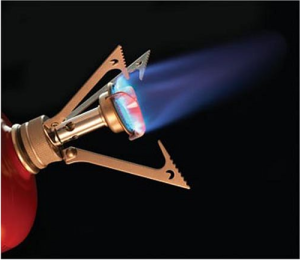
PROS
- Light & compact
- Rapid boil times
- Easy to use
- Clean burn – no smell or pot residue
CONS
- Slightly more expensive fuel
- Can be harder to find fuel internationally
- Not as good as liquid fuel stoves in extreme cold
LIQUID FUEL STOVES
Liquid fuel stoves are much heavier and bulkier than other backpacking stoves and they also require some maintenance over time. That said, liquid fuel is the best choice for winter trips, international trekking, and big group outings.
Liquid fuel stoves work well in below-freezing conditions and their fuel (white gas) is cheaper than canister stove fuel. Some liquid fuel stoves can be used with different fuel types (like kerosene and unleaded auto fuel), which makes them a good fit for international trips where isobutane canisters and white gas will be harder to find. if you’re planning to make big group meals in large pots (like scouts or guide services), a liquid fuel stove could be a better fit because they have stable bases and more cost effective fuel.
Still, we almost never bring liquid fuel stoves on our 3-season backpacking trips anymore. They’re heavier, more expensive, and more complicated to use than other lightweight stoves. Also, some of them are noisy and will require much more maintenance over time.
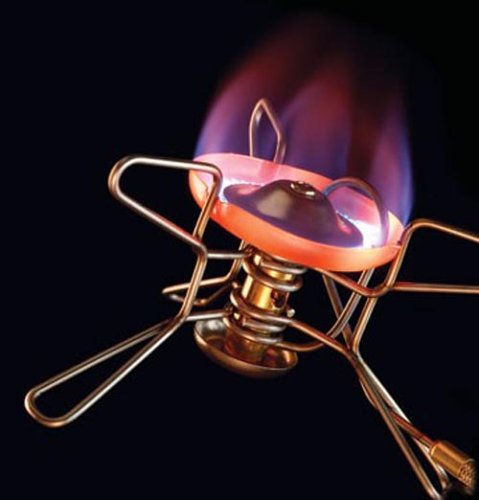
PROS
- Fuel is less expensive
- Fuel bottles are refillable & easier to gauge usage
- Good for melting snow on winter treks in extreme cold
- Can be better for international travel
CONS
- Heavy & bulky
- More expensive – need to buy fuel bottle too
- More complicated to use – priming required
- Can be dangerous – fuel can spill when priming
- More maintenance necessary
- Some are noisy
ALCOHOL STOVES
Alcohol stoves are very light and simple. In the past they were the dominant choice for thru-hikers because of their low weight, affordability, and readily available fuel in small towns. That’s not so much the case anymore. Over the past few years canister stoves have become much more common among thru-hikers because of their convenience, speed, weight, and safety. Also, it’s getting much easier to find isobutane canister fuel in small trail towns.
Alcohol stoves are cheap to buy or make, they weigh close to nothing, and their fuel is easy to find. Heet (in the yellow bottle) is a gas-line antifreeze made for cars that is commonly used as fuel for alcohol stoves. You can find Heet at most gas stations and almost anywhere with a small auto department.
The main downsides with alcohol stoves are the slow cook times, poor performance in wind and cold, and less efficient fuel. Cooking times for alcohol stoves can be decreased with a system like the Solo Stove Alcohol Burner, which will help block wind and hold heat against your pot to increase efficiency. But even with a good windscreen, cooking with an alcohol stove will require more patience.
Also, be careful when using alcohol stoves because their fuel burns practically clear and can be very hard to see. Always make sure your stove has fully burned out before handling it or attempting to re-fuel. Never use an alcohol stove in a fire ban area. A small amount of spilled fuel can easily ignite dry brush.
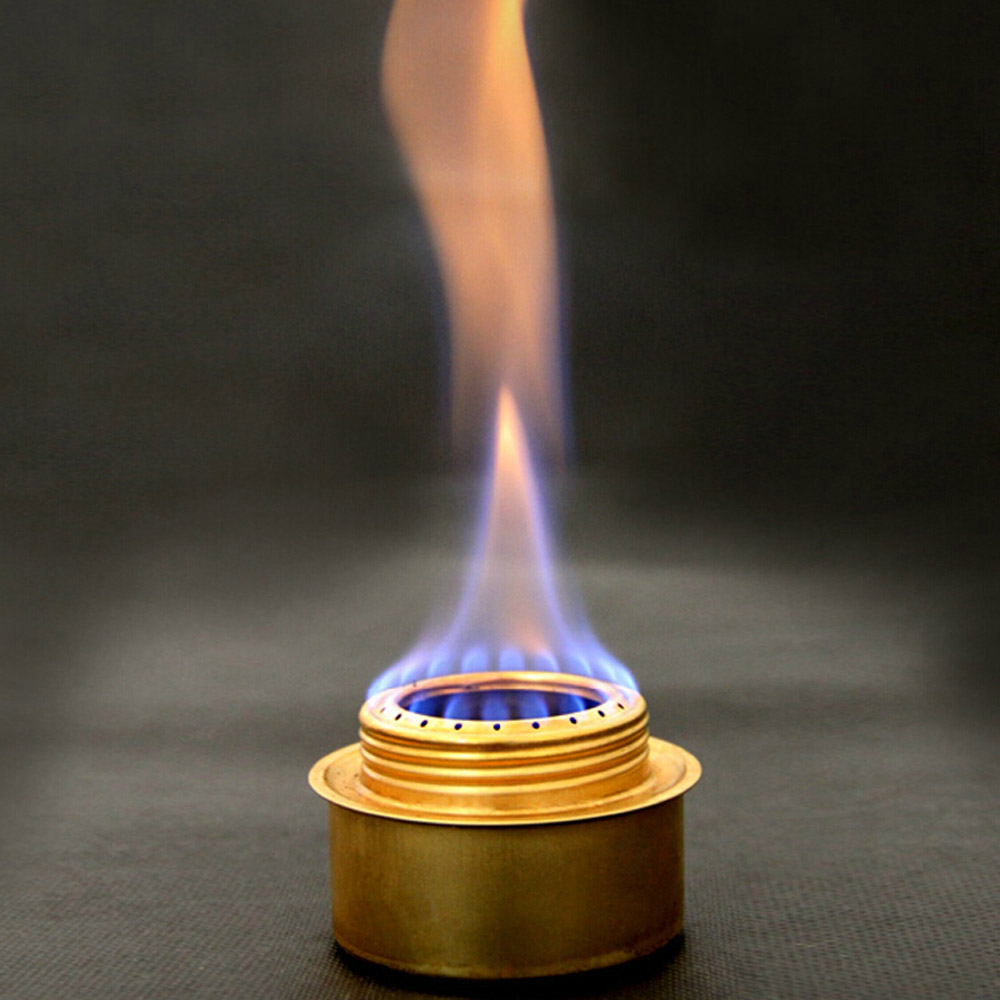
PROS
- Light & compact
- Inexpensive
- Easy to make
- Easy to find fuel
- Very quiet
CONS
- Slow cooking times
- Less efficient fuel
- Poor performance in wind
- No temperature control
- Can be dangerous – hard to see flame, easy to spill fuel
- Can’t use during most fire bans
- Not good for winter trips
SOLID FUEL STOVES (ESBIT)
Solid fuel stoves are just about as light and simple as stoves get. They use Esbit fuel tabs, which burn a low-medium flame for about twelve minutes. All you need to do is open up a fuel tab, light it on fire, and place your pot on a stand over the flame until your water boils. Solid fuel stoves are compact, easy to make, and they’re very quiet too.
It’s not all rosy for solid fuel stoves though. Like alcohol stoves, solid fuel stoves have much slower cooking times, so patience is required. They’re also very susceptible to wind, making a good windscreen critical. The fuel tabs are pricy when compared to other fuel sources, so they don’t make as much economic sense over the long haul. The tabs also give off an unpleasant odor and will leave a sticky residue on the bottom of your cook pot. In addition, fuel tabs can be hard to find in small trail towns, which makes them a tougher fit for thru-hikers.
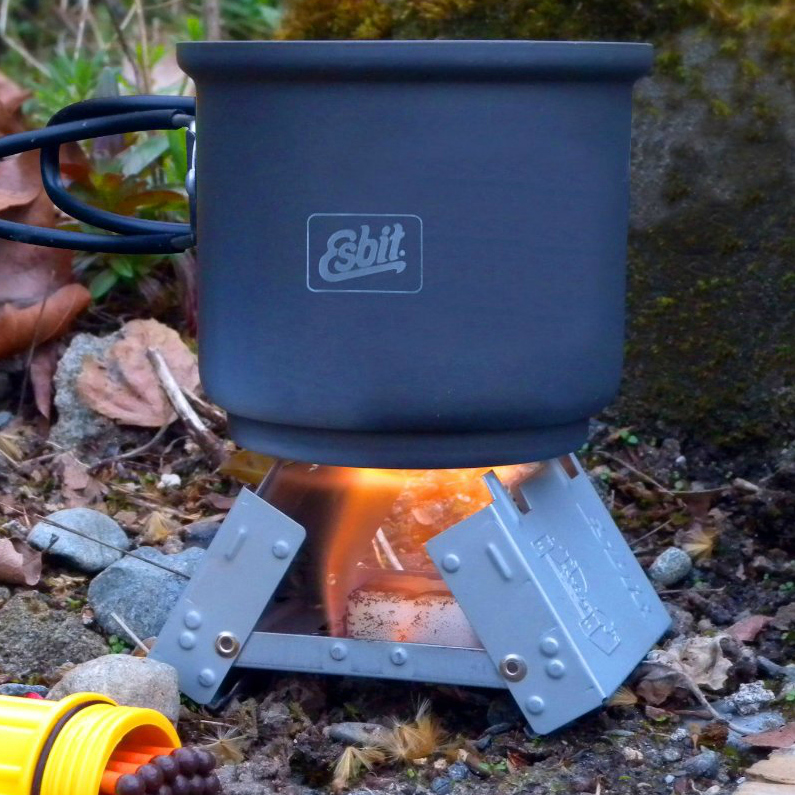
PROS
- Light & compact
- Inexpensive stove
- Easy to make and use
- Very quiet
- No fuel spilling
CONS
- Slow cooking times
- Expensive fuel
- Poor performance in wind
- No temperature control
- Residue left on pot
- Unpleasant odor
- Can be tough to resupply fuel
- Not good for winter trips
WOOD STOVES
Wood stoves are a popular option among lightweight backpackers that like doing things the old-fashioned way. Using a wood stove is very similar to cooking over a campfire, but quicker and more efficient. With a wood stove you won’t have to carry any fuel, you’ll be able to cook longer, you’ll be burning a renewable resource, and you’ll get to enjoy the comforts of a fire nearly every night.
Wood stoves do have some significant downsides as well though. They require much more time, effort, and practice than most backpacking stoves, which can be frustrating when you’re tired and hungry after a long day of hiking. It can also be tough to find good fuel on rainy trips and when camping above treeline (most wood stove users carry backup Esbit fuel just in case). Wood stoves will blacken the bottom of your pot with soot, so you’ll want a carrying case for your pot as well. And lastly, wood stoves are susceptible to wind and can’t be used during most fire bans.
While they’re far from the most convenient or speedy stove option, cooking over a fire can be a nice treat if you’re willing to put in the extra effort.
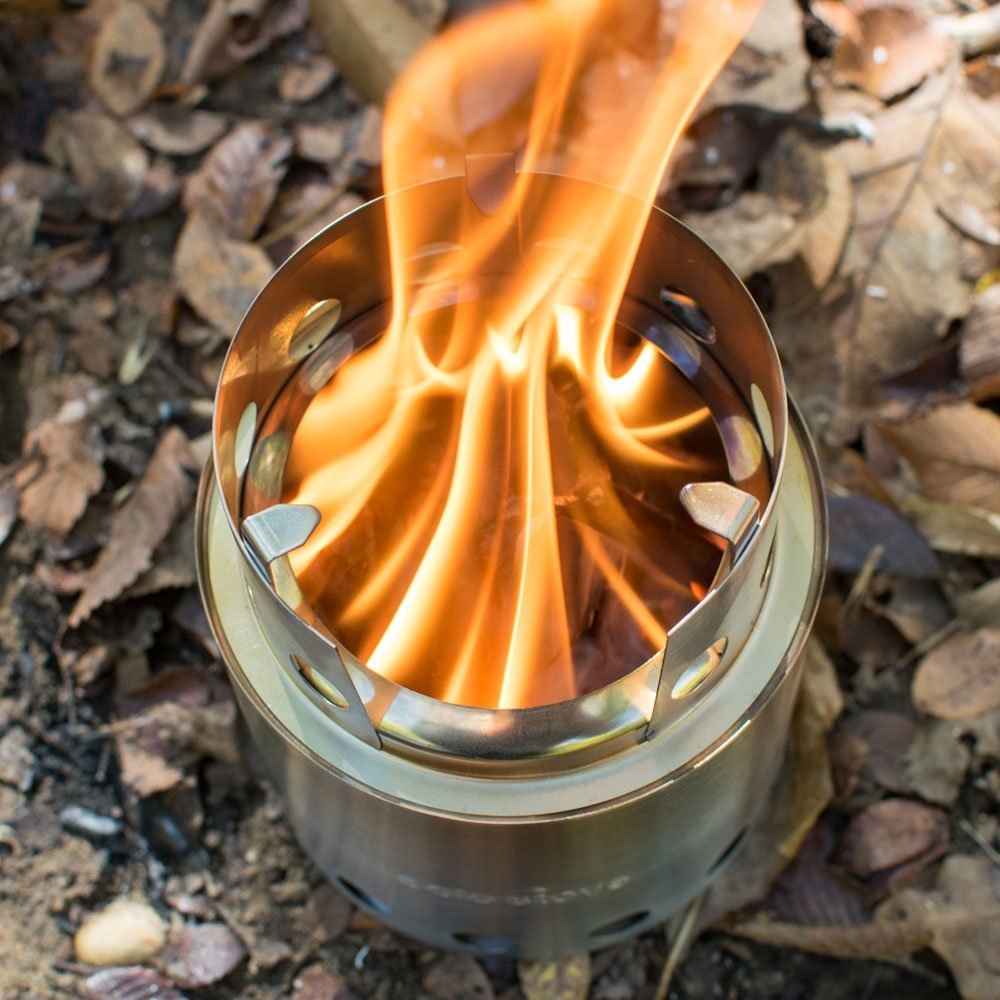
PROS
- Minimal fuel weight
- Minimal fuel cost
- Renewable fuel resource
- Nostalgic & pleasant
CONS
- More time, effort & practice required
- Slower cook times
- Usually heavier
- Hard to find fuel when wet or above treeline
- Blackens the bottom of your pot – messy
- Can’t use during most fire bans
- Not good for winter trips
NO STOVE
It’s important to note that bringing a stove backpacking is completely optional. Some thru-hikers cut out the added weight, cost, and complexity of cooking and hardly miss it at all. Going stoveless is easy to do: just bring more food that doesn’t require cooking. The downside is that some of the weight savings of going stoveless will be canceled out by heavier (non-dehydrated) food choices. Also, you won’t be sipping any morning java or enjoying warm dinners, which can be great morale boosters. But for some, the upside to going stoveless is worth sacrificing a few camp comforts. Personally, we enjoy morning coffee and warm dinners a little too much to leave our stove at home. We just try to keep our cooking setup as light as possible.
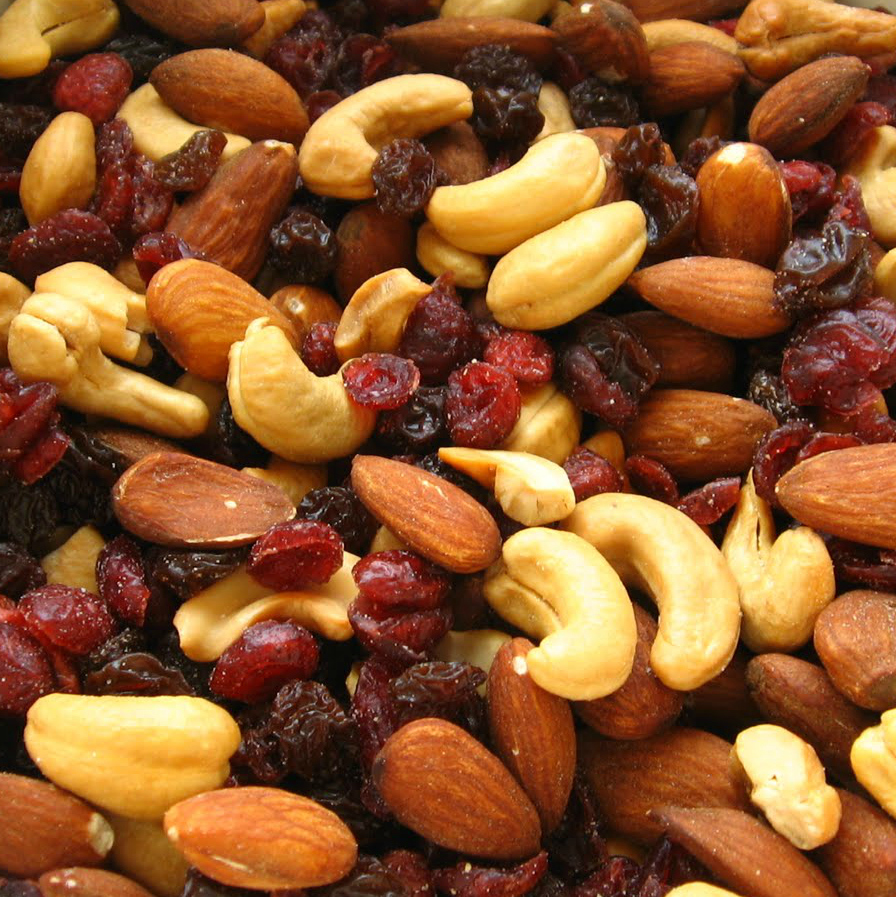
PROS
- No effort or hassle
- No weight or expense
CONS
- No warm meals or drinks
- Fewer meal options
- Heavier food choices
What’s In Our Camp Kitchen?
When we head out on backcountry trips, these are the items usually found in our packs:
- Best 1-2 person cookpot: Snow Peak Mini Solo Cookset
- Best group cookpot: MSR Big Titan Kettle
- Best spoon: Sea to Summit Alpha Light Long Spoon
- Best cup: Sea to Summit X Tumbler
- Best food storage: Ursack & BearVault BV500
- Learn more: Best Backpacking Cookware
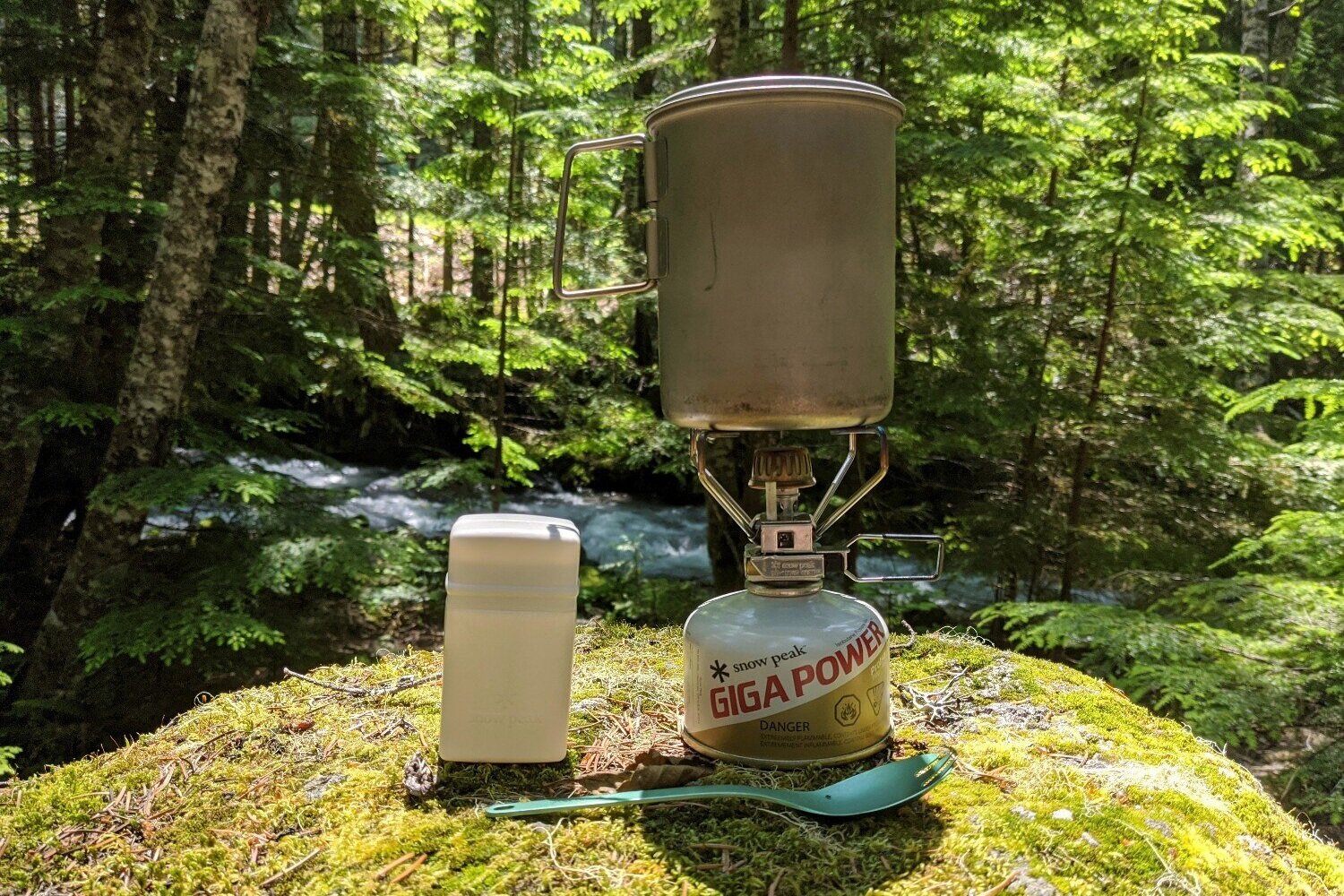
Critical Stove Considerations
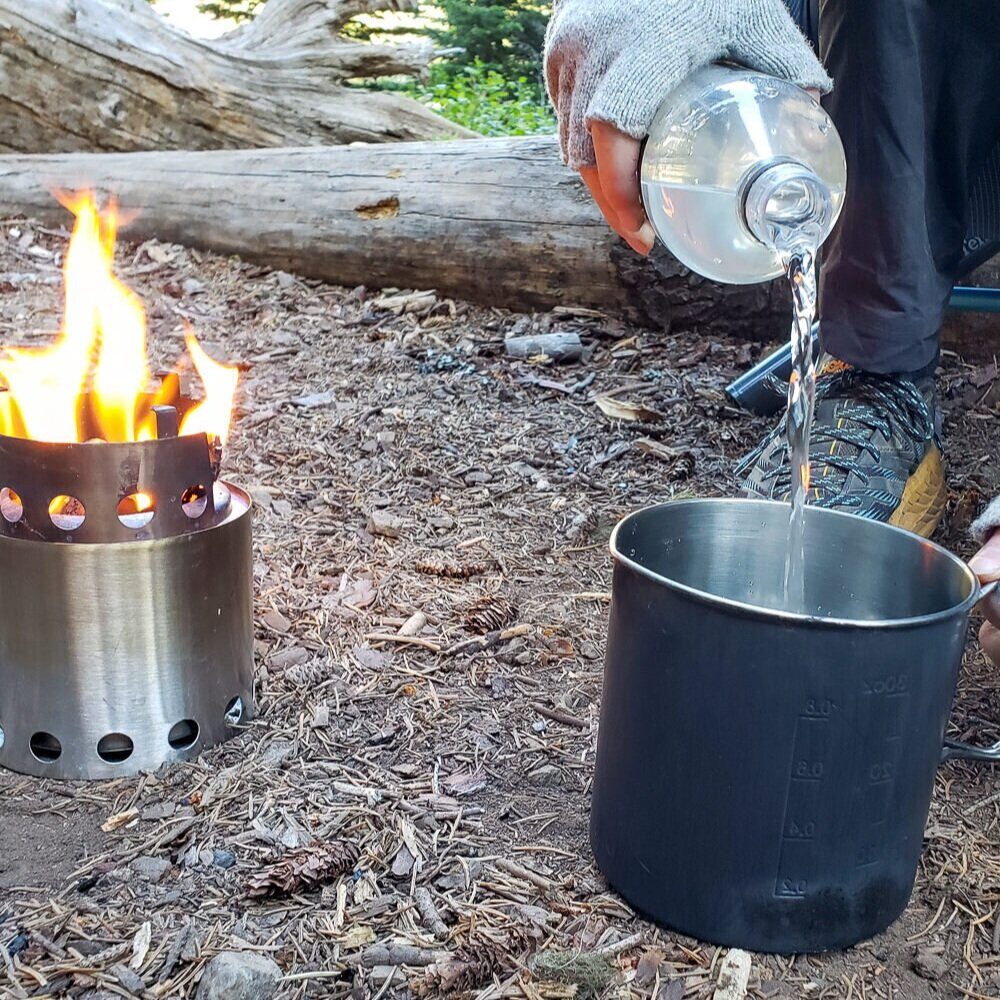
COOKING VS BOILING
Most backpackers these days make very simple meals that only require boiling water for rehydrating food. For that reason, the main purpose for most backpacking stoves is to boil water quickly, not necessarily to cook. Check out our lightweight backpacking food guide for some recommendations on trail nutrition and our favorite backpacking meals.
SIMMER CONTROL
If you want the ability to cook more complex trail meals, you’ll definitely want a stove with good simmer control. Some canister stoves and liquified gas stoves have this feature, but not all of them. Simmer control can be a handy feature even if you only plan on making simple backcountry meals. It’s a lot easier to keep a pot from boiling over when you have a choice between off and turbo.
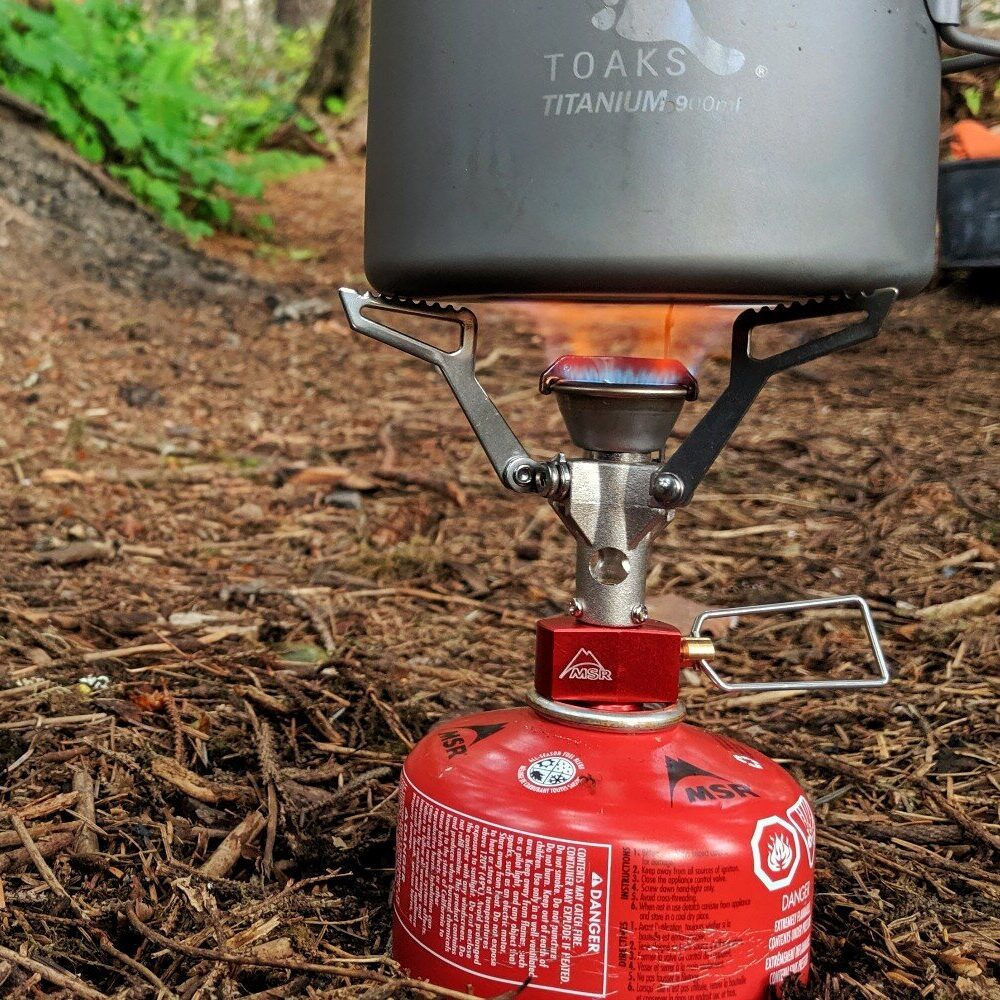
GROUP COOKING
If you’re going to be traveling in a group, it’s usually a good idea to have at least one small stove for every two people. Stoves are so light these days that it’s not even uncommon for every hiker to carry their own cooking setup. More stoves means less waiting for dinner, which is generally good for group morale, especially at the end of a long day. If you plan on making large one-pot meals (like boy scouts or guiding services), you’ll probably want a sturdy stove with a wide base that will handle big pots better.
WINTER USE
Winter camping presents a different challenge for backpacking stoves: melting snow for drinking water. This means you’ll be using your stove a lot, so you’ll need more fuel and a stove that will perform well in below-freezing conditions. Of the groups of stoves listed above, only the liquid fuel stoves are really built for this task. The other stove groups may perform well in limited winter use, but extreme cold is not really what they’re designed for.
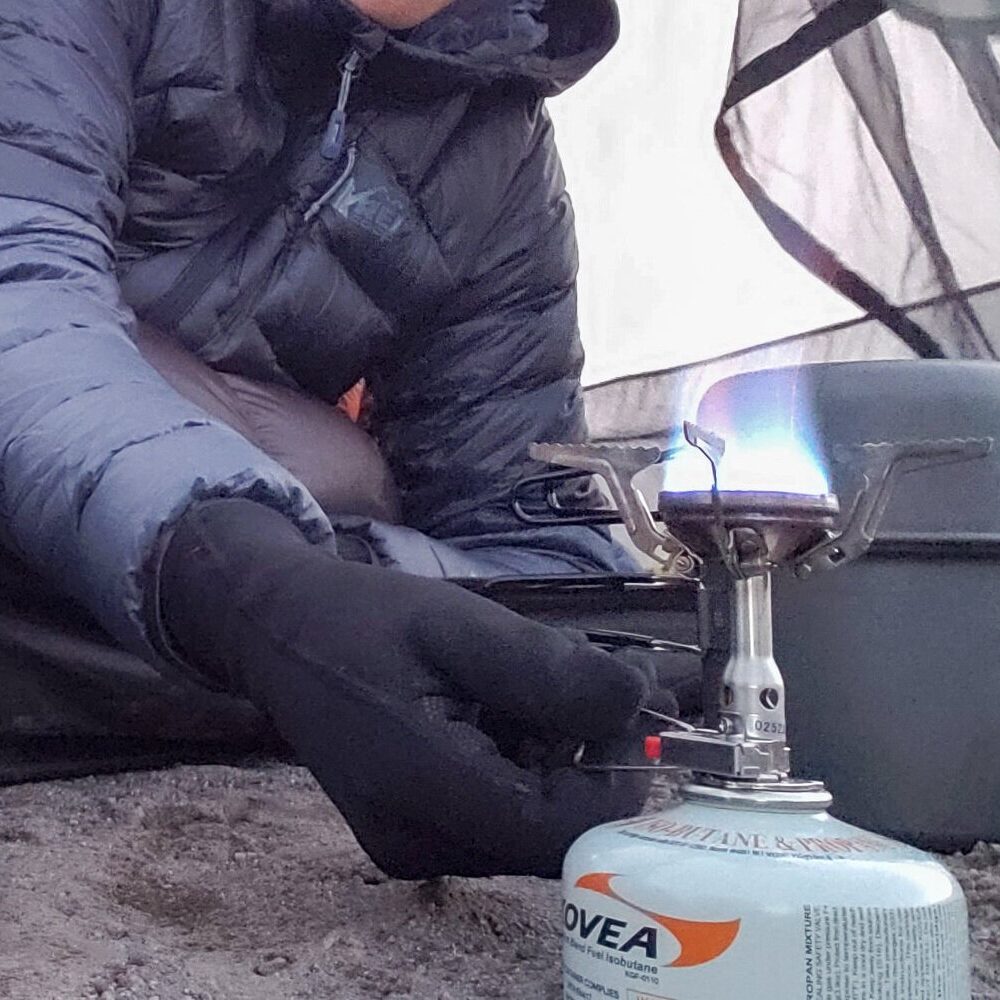
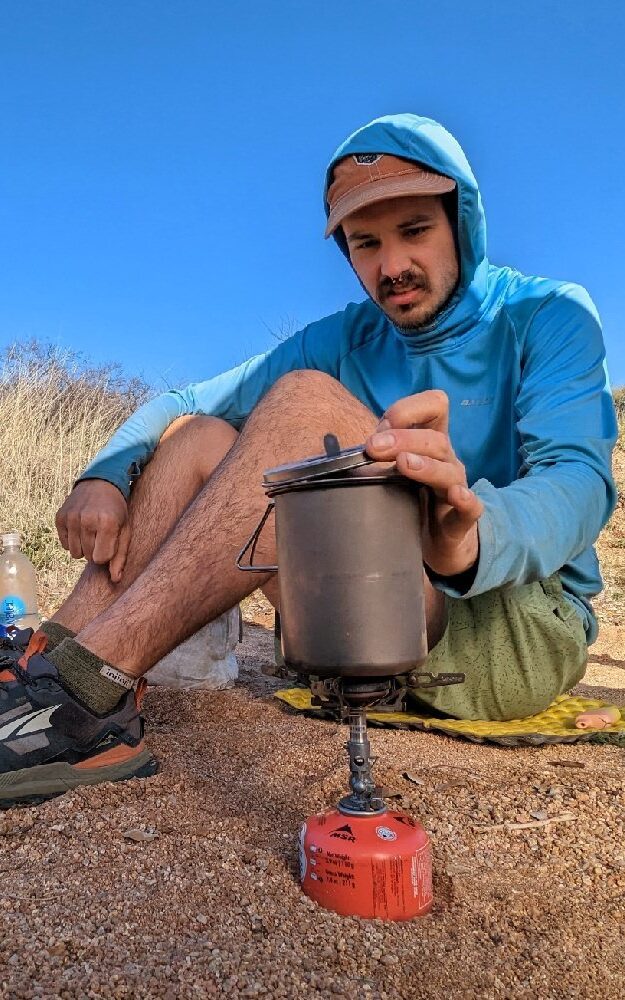
STABILITY
Knocking a fully cooked dinner onto the ground is the pits. Unless you enjoy eating dirt, you’re going to want to avoid that move at all costs. If you plan to cook large meals in big pots, get a stove with a wide base that will rest securely on the ground. Smaller pots used with upright canister stoves will work just fine, but they do tend to be a little less stable, so cook with care.
PRIMING
Some backpacking stoves require “priming” to work properly. Priming is essentially preheating. You light a small amount of fuel in the stove and give it time to warm up. When the stove gets hot enough it will work as designed. Priming is generally easy to do, but it can be a source of confusion (and danger) for beginners. Most liquid fuel stoves require priming with every use. Some alcohol stoves require priming as well. Canister stoves do not require priming.
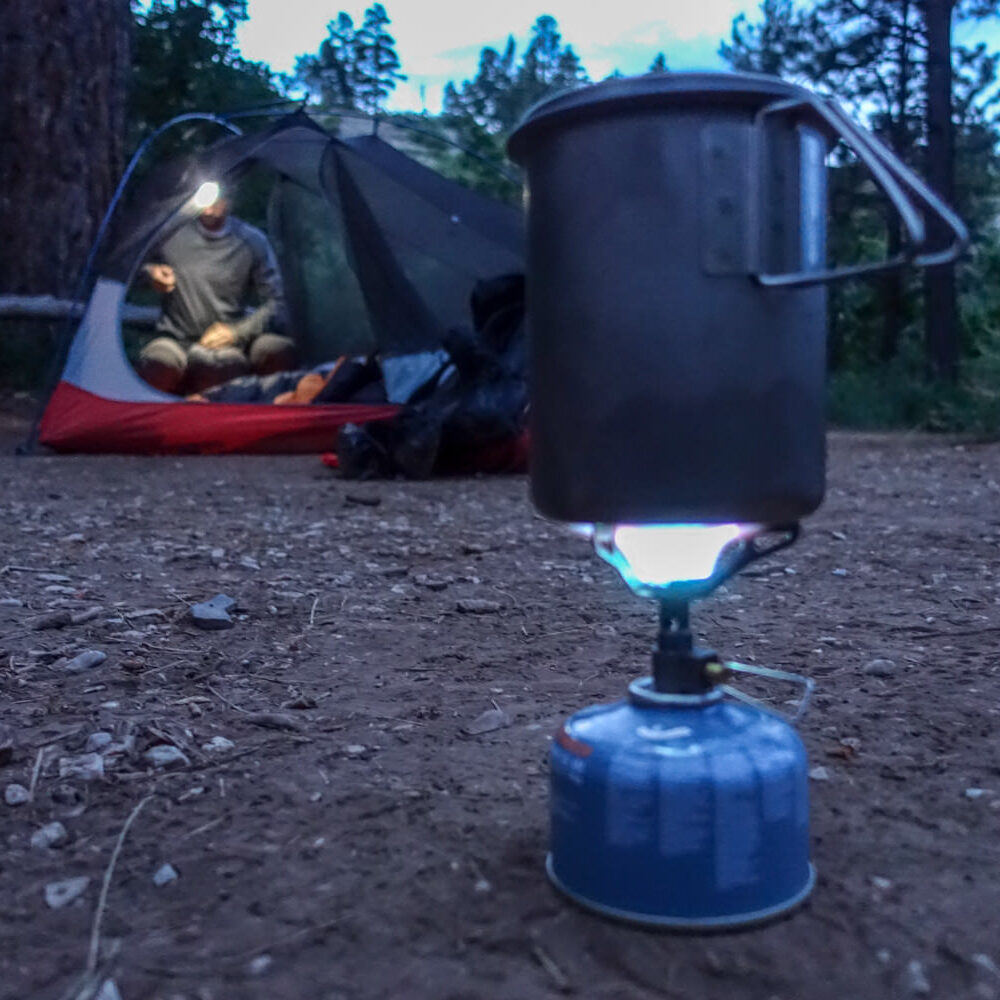
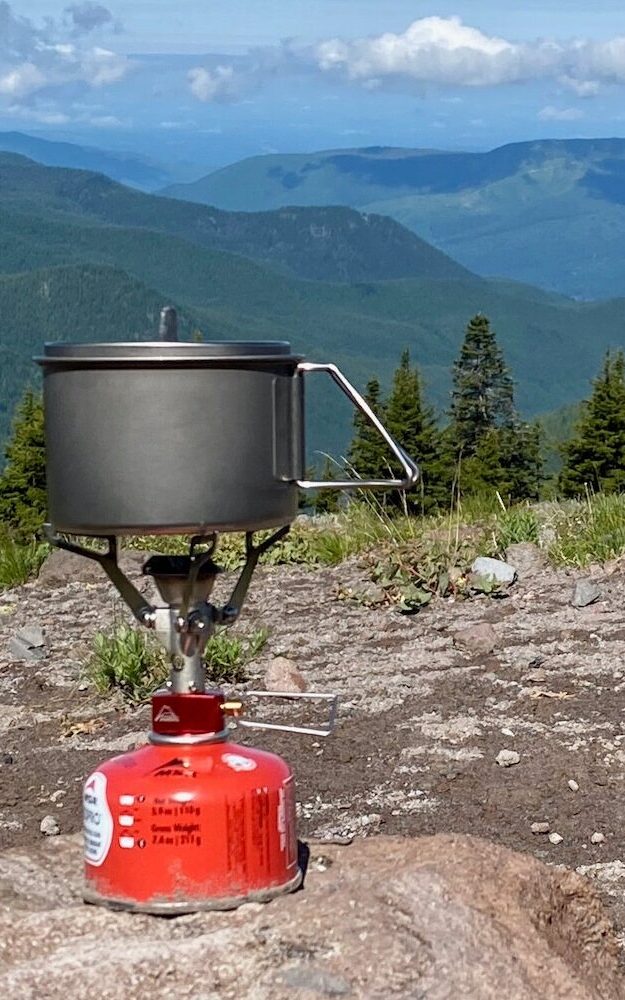
WIND PERFORMANCE
Backpacking stoves don’t like wind. Strong winds will whip away heat before it ever gets to your pot, which will make your stove far less efficient. Some stoves perform better in windy conditions (integrated canister stoves) and others perform very poorly (alcohol stoves, wood stoves, and solid fuel stoves). For that reason, a windscreen is recommended with most backpacking stoves. The one exception to this would be canister stoves because it can be dangerous to heat up a fuel canister.
FIRE BANS
Forest fire danger is an important consideration for any stove user any time of year, but especially when conditions are hot and dry. Fire ban rules differ from place to place, so check the specific regulations in your area. In some strict fire ban areas, all stove usage is prohibited, but that’s not common. In general, canister stoves are usually viewed as the safest option. Solid fuel stoves may be permitted as well. Wood stoves and alcohol stoves are usually not permitted. Liquid fuel stoves may be allowed, but exercise extreme caution when priming. Spilling highly flammable fuel while priming is easy to do and could quickly start a fire.
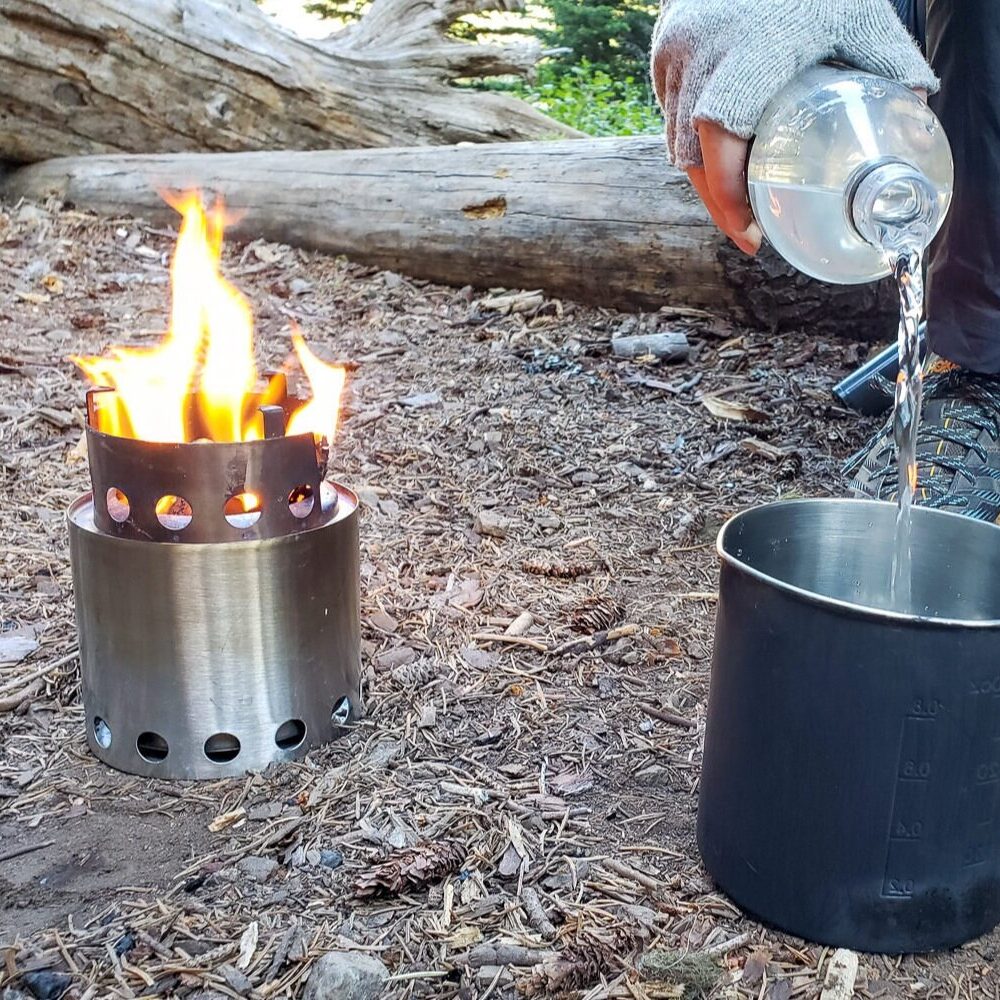
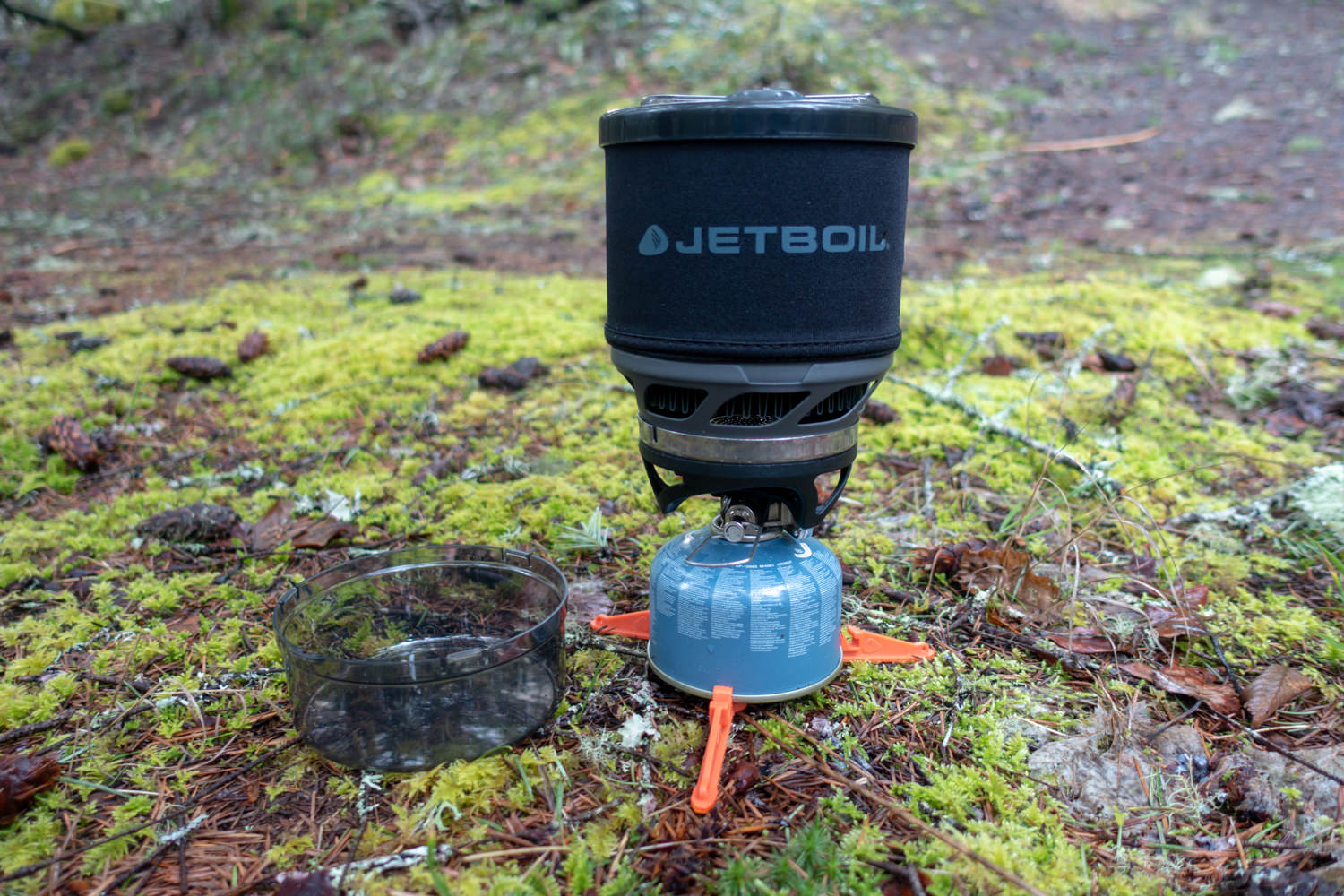

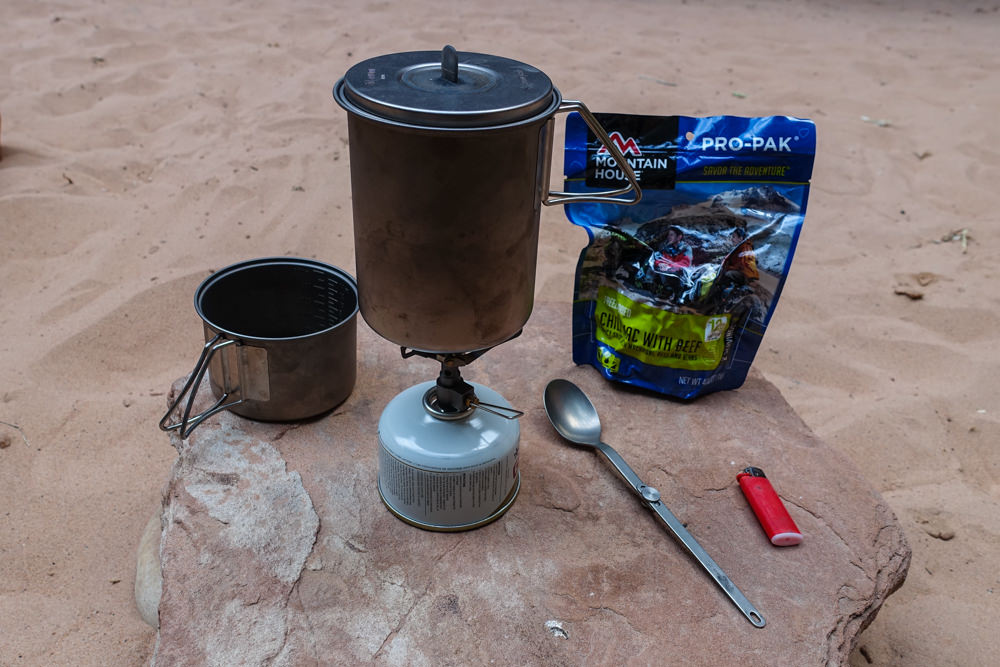
Honorable Mentions
The following stoves didn’t make our final list, but they’re very popular and they’ve still got a lot of good things going for them. You never know, one of these stoves might be perfect for you:
stable multi-fuel stove with a great balance between convenience and efficiency
a high-powered multi-fuel burner that can melt snow fast in extreme conditions
ultralight, affordable, and efficient alcohol stove designed with a screw-on lid, so you can save unburned fuel
simple, affordable, and durable solid fuel stove


